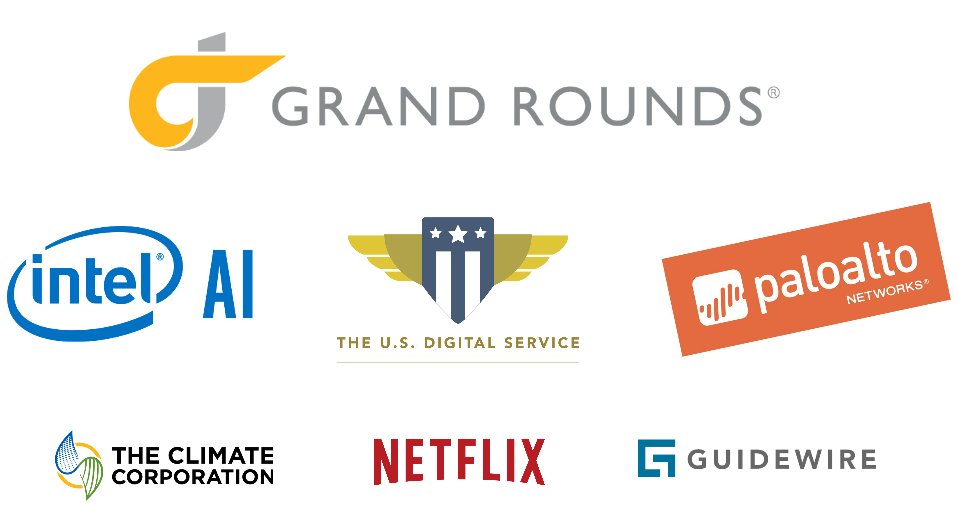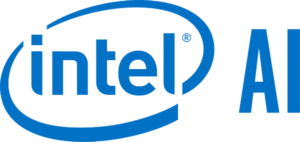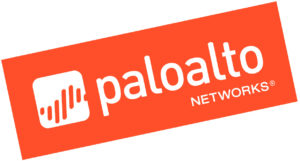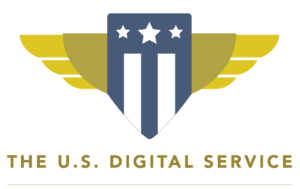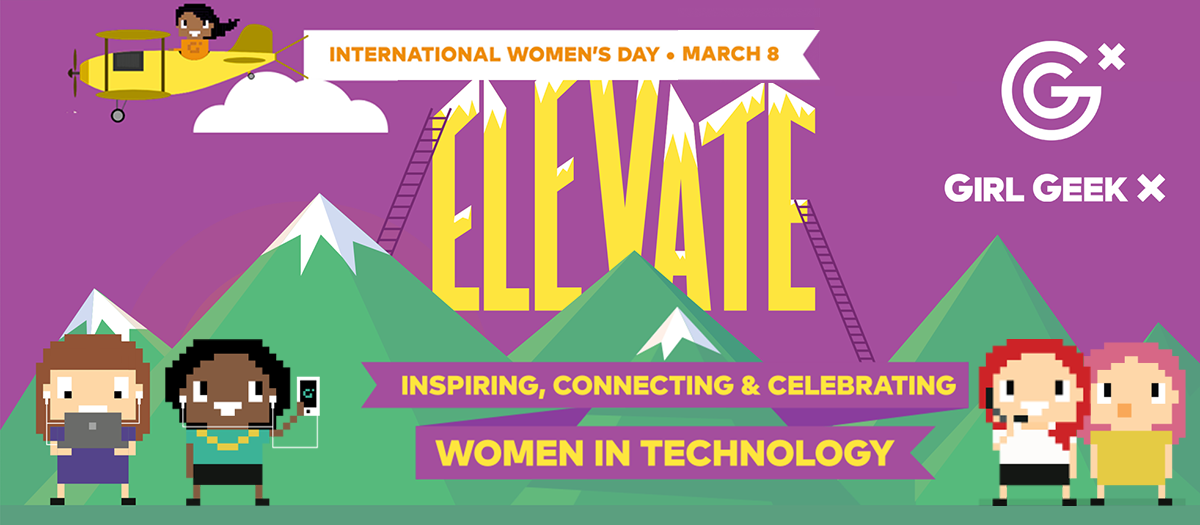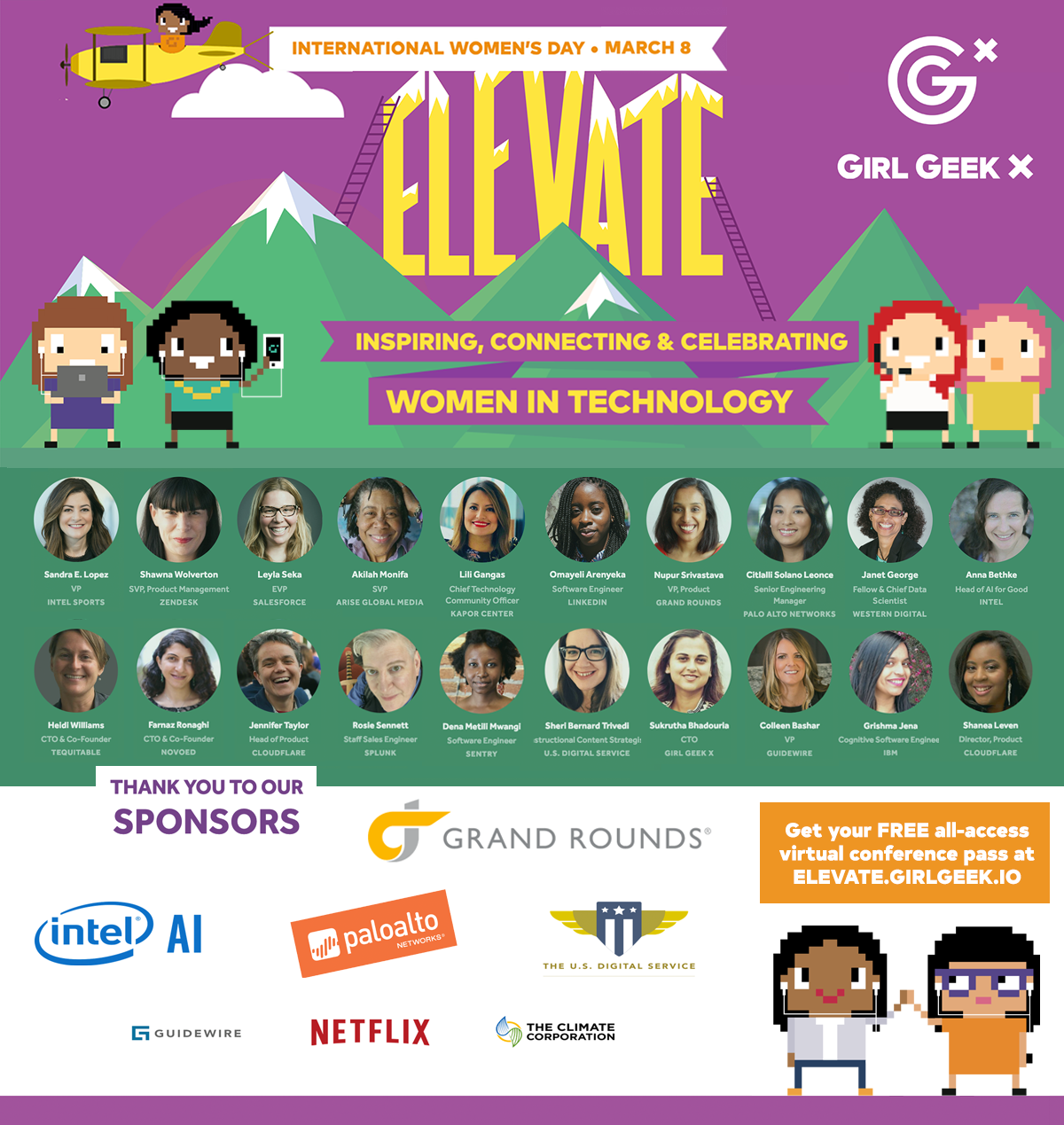Like what you see here? Our mission-aligned Girl Geek X partners are hiring!
- See open jobs at Realtor.com and check out open jobs at our trusted partner companies.
- Does your company want to sponsor a Girl Geek Dinner in 2021? Talk to us!
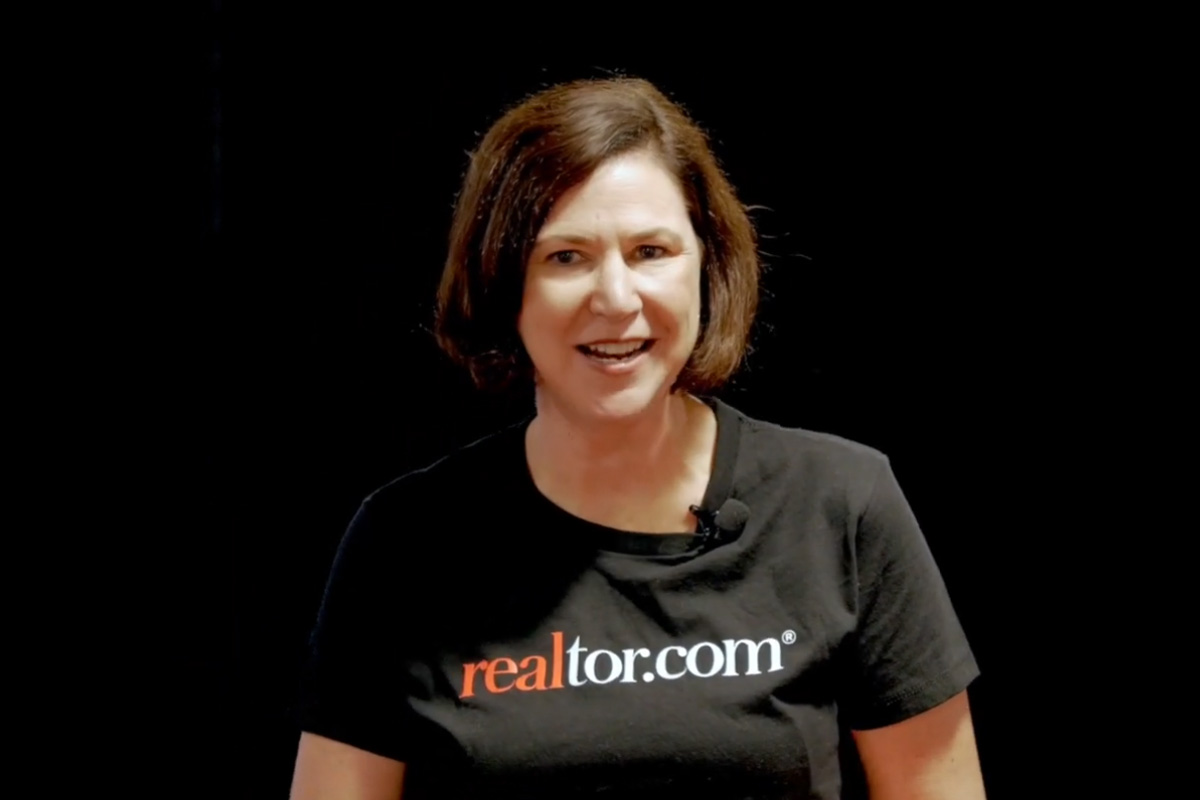
EVP Pam Holmberg welcomes the sold-out crowd to Realtor.com Girl Geek Dinner in Santa Clara, California.
Speakers:
Pam Holmberg / EVP / Realtor.com
Sarah Staley / Senior Director, Marketing / Realtor.com
Chung Meng Cheong / Chief Product Officer / Realtor.com
Nan Ke / User Experience Research Lead / Realtor.com
Heidy Kurniawan / Senior UX Designer / Realtor.com
Sam Weller / Senior Manager / Realtor.com
Sonali Sambhus / Engineering Leader / Realtor.com
Latife Genc Kaya / Principal Data Scientist / Realtor.com
Transcript of Realtor.com Girl Geek Dinner – Lightning Talks & Panel:
Pam Holmberg: Hello and welcome to our home tonight. We are so thrilled to have all of you here tonight and we are honored to be able to host Girl Geek and all of you at Realtor.com tonight. My name is Pam Holmberg and I am the head of HR at Realtor.com. And I am excited to just give you a little bit of information about who we are and I’m excited for you to hear tonight, from other people from our company, to hear more about what we do, how we service the market, and hopefully you all find the information really beneficial.
Pam Holmberg: Alright, let’s get started. Just to make it a little more fun. So at Realtor.com, home is everything to us. It is really what we focus on and we understand that owning a home continues to be one of the greatest dreams of many Americans across the country. For us though, home is much more than just a roof and four walls. It is the place where we have our families, it’s the place where we go for safety and for warmth, it’s the place where we create memories. And so, we recognize that, and we put that at the forefront of everything that we do.
Pam Holmberg: We also recognize it is the single largest expense that most people will ever … single largest purchase that most people will ever buy. And so, we recognize that there’s not just an emotional connection to it but there is a very large financial connection.
Pam Holmberg: What you probably all know is that the real estate market is massive. What you might not know is that over 6 million homes were sold in the United States in 2017 and it’s a total of $1.8 trillion in transaction value. It is a huge, huge opportunity. And for us, we really want to ensure that we do everything we can to connect the home purchaser, the consumer, with the right real estate agent and really it is one simple mission for us, and that is to empower people by making all things home simple, efficient, and enjoyable.
Pam Holmberg: Now how many of you have purchased a home? How many of you have purchased a home using Realtor.com? Sorry, I had to plug that. What you all know, except for Dottie who used Realtor.com, is it is not a simple process. It is anything but easy, it is extremely stressful, and time consuming, and scary and again, what we try to do, is take away some of that fear, some of that stress and create a product that helps, again, connect the buyer to an agent who can help walk you through that.
Pam Holmberg: And so, if you haven’t visited our mobile apps or our website, I highly encourage you to do so and I think what you would find is that there is a lot to what we offer. It is not just a connection to an agent, we offer information about how to plan on your first home mortgage, how to fix your credit, if you have a credit problem, what areas might be right for you and your family. So there’s a ton of information out there. So it is much more than just that connection. So hopefully you’ll take some time to take a look at our website.
Pam Holmberg: And as was mentioned earlier today, we’ve been around for 20 years. So we’re one of the original companies that have been focused on digital real estate. So we have a huge track record in this area and we have continued to transform our company as the real estate market has also transformed. We get 63 million visitors to our website every month, it’s an astounding number. And so, there are so many people who are out there looking for this information, and that continues to be our focus.
Pam Holmberg: We lead the market in engagement and really when a customer is ready to buy a home, we are the place that they come, and we couldn’t be more proud of that. And as I said, it is our number one focus to ensure we are helping to connect the buyer with the right real estate agent. Here are the company values, and really, I’ll let you read through these, but what the main focus is for us is, we don’t take this responsibility lightly. We want to ensure that everything we do to support this process, isn’t just focused on what we do but how we do it, because we really believe that that matters. So I hope that you enjoy this evening. I hope that you find the information beneficial and again, thank you so much for joining us tonight.
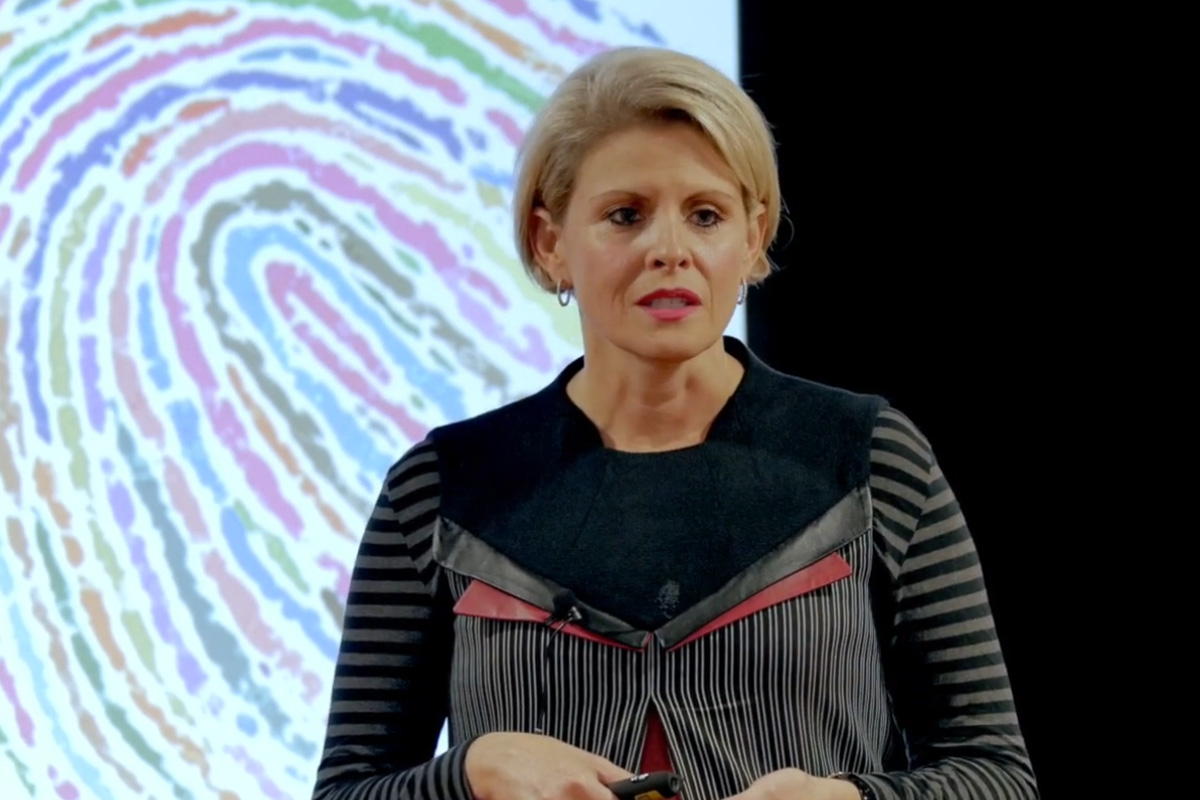
Senior Director of Marketing Sarah Staley encourages girl geeks to learn something new about each other at Realtor.com Girl Geek Dinner.
Sarah Staley: Hi everybody, I’m Sarah and I’m here. We’re gonna get to know each other a little bit better. So I want to invite anybody who’s in the back, including my Realtor.com friends, to come forward and take a seat. Because we have … we’re gonna feel the love. So I want to see those seats filled, okay?
Sarah Staley: Hey everybody, I’m Sarah Staley and I’m part of the Realtor.com team and I’m part of our team that leads communications outreach and culture, so we’re really, really delighted that you’re here tonight. We’ve been looking forward to this for quite some time now. Having Girl Geek and any visitors to Realtor.com is just a joy because when you have a home, you want to welcome people into it. And so, we’ve got out the welcome mat for you tonight and we’re delighted.
Sarah Staley: So, I want to show you a quick picture. I’m going to take the non-working clicker, thank you, and this is Scarlett. This is my daughter and as you can probably sense, Scarlett was looking at me one day with that look. That look of like, I don’t know what you’re doing, I don’t know what you’re thinking, but she was definitely checking me out. Now, you were probably checking a number of people in this room out already tonight, it’s what we do. You decided probably before even getting that Girl Geek invitation, what Realtor.com was in your own mind. Maybe you’ve driven by a number of times this evening, or in your commute you’ve thought of Santa Clara, you’ve seen the Realtor.com sign, you haven’t really known what we do.
Sarah Staley: Perception is something, and stereotyping is something we do everyday. So, let’s do this. I want you to look at the people around you. People, look at the people around you. Jessie, Woody, look at the people around you. Alright, right? You’ve got a perception, you’ve been checking them out, you’ve been doing it all night long. Alright, alright. Don’t pretend like you haven’t, Jessie.
Sarah Staley: Alright, now here’s the deal. I want you to take a quiet moment and I want you to personally go somewhere and think about, what is something that has happened in my life that actually had a significant impact on who I am today? Okay? Maybe it was career wise, maybe it was family wise. Now I want you to look at a new friend next to you, maybe it’s an old friend, but it’s probably not a conversation that you’ve had before. And I want you to huddle up and I want you to share with them what that one thing was. Okay, go. Let it out.
Sarah Staley: What is one thing, one thing, that might have significantly changed and had an impact on who you are? Isn’t that fascinating, right? We have these perceptions and within one minute, you can create a personal connection that probably … the connection that’s now there is a story you may not have ever shared. People that you have worked with may not have ever known that about you and that’s all it took to get to know somebody better. It’s a conversation. It’s breaking down walls, it’s breaking down stereotypes, it’s getting to know one another.
Sarah Staley: I saw fists over here, Katherine was punching the air. I saw hands over here. I don’t know what’s going on but I intend to follow up because I don’t know all those stories but certainly, when we take the time to hear other peoples’ stories it certainly goes a long way.
Sarah Staley: You know, sometimes we’re right with our first impressions. The fact of the matter is sometimes we feel like we get each other. I even feel like I get people sometimes when I’m interviewing them for a job description, you just feel that personal connection, right? But honestly, what often will happen is that I get you, means more that I know more about myself than I know about you.
Sarah Staley: The fact is is that we live in a world of stereotypes. We’ve been doing this for ages but we certainly do it more than now. Whether it’s your Bitmoji, whether it’s your LinkedIn, whether it’s your Instagram, Musical.ly, whatever it is, I can’t keep up. You have a perception of me, you have a perception of my world, you have a perception of my work. And sometimes it’s harder for some of us because we use our voices more demonstratively. That can be at work, that can be personally, that can be in our families. But we’re really glad that you’re here today because for us at Realtor.com, it’s about opening up that door and wiping your feet on that welcome mat and coming in and being your authentic self.
Sarah Staley: You know, intersectionality, we often talk a lot about … you may not know what this means, but intersectionality is beyond inclusion, it’s beyond diversity, it’s when you really take time to get to know a person’s story, and that’s when the real color comes in. So we are so absolutely delighted that you are here tonight because we want to know your color, we want to know who you are, we want you to know more about us. That’s something that I think we all aim to be in our daily lives and it’s certainly a part of our fingerprint here. So we’re just truly delighted to welcome you here tonight.
Sarah Staley: You know, we all have a story, we all have wonderful people in our lives, we certainly do here at Realtor.com and we’re glad you’re a new part of our neighborhood. We welcome and hope that you’ll get to know more about our story tonight and more about one another. So welcome, I’m gonna introduce Chung.
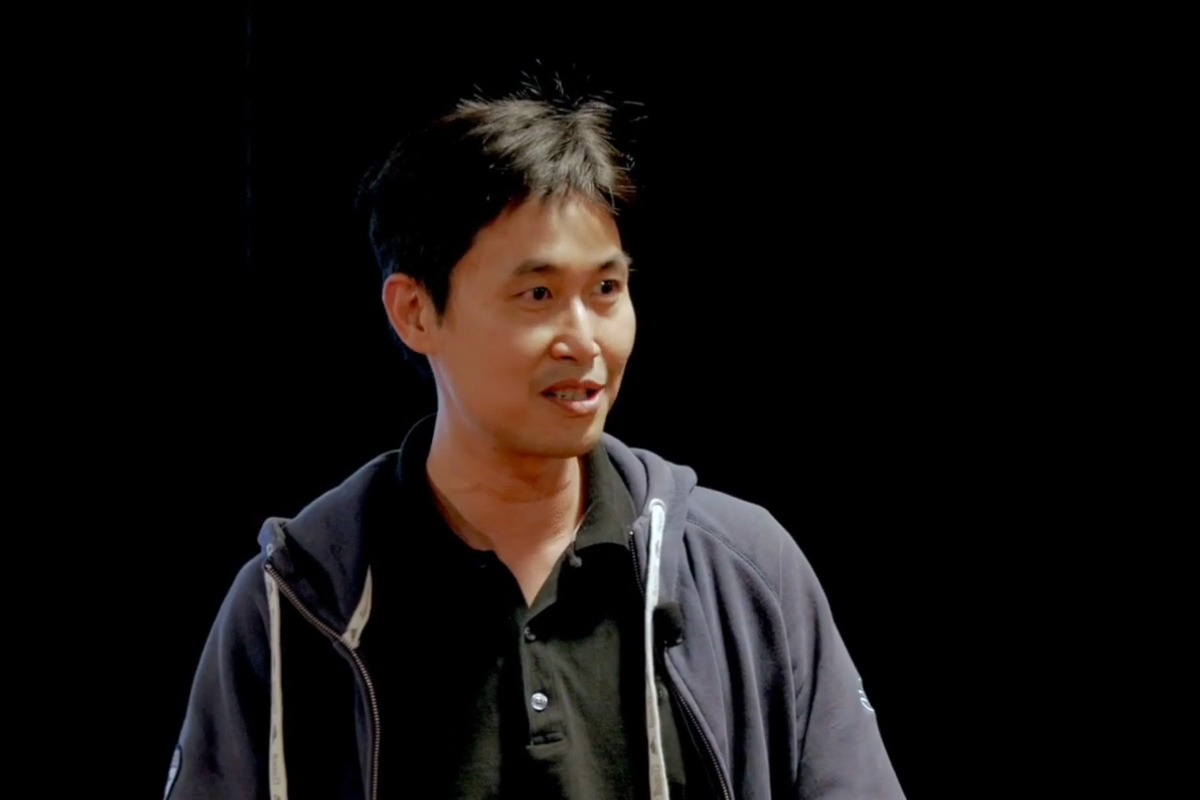
CPO Chung Meng Cheong speaking about product and people at Realtor.com Girl Geek Dinner.
Chung Meng Cheong: Thank you. Hello everyone. This is probably the infomercial part of the session tonight so I appreciate you guys giving us about five, ten minutes just to kind of tell you a little bit about what our products are and kind of what we do around here. So I’ll try to be entertaining, because I don’t want to get between you and the wine that are back there. Thank you, a little bit charity laugh really, really helps.
Chung Meng Cheong: For those of us who love speaking, they dig this. For the rest of us, we kind of cringe up, so we’ll try. But thank you, welcome. As kind of Pam and Sarah said, we’re excited to kind of welcome you to our home and we really appreciate you taking a little bit of time out from your busy day, to come hang out with us.
Chung Meng Cheong: Special thanks to Girl Geek for this opportunity to host so many people. We’re really excited that all of you are here. The company has been around for twenty years and where we started from was around home search. And the pain point that we were solving for was, hey it’s kind of not easy. Right? Trying to figure out what kind of home to buy, where’s the right one for you, planting your roots down, those are not straight forward questions. And so, where the company started off was around kind of what we call home search.
Chung Meng Cheong: We have, you heard from Pam, 63 million people, they use our website, they use our mobile apps, and this is kind of what they do. They essentially come here because they’re looking for information, and we try to give them an experience which is easy to use, super helpful, and be as proactive as possible. Because sometimes you can’t always be checking for the right home, you really want the right home to tell you when it’s available. So that’s what we do.
Chung Meng Cheong: That’s kind of the UI or UX piece of it but sitting below it, as our kind of our engineers and our data scientists will tell you, there are very, very, very few things that you can work on that’s such a data rich kind of problem, a domain. And our data scientists geek out on all the crazy things they can do with kind of the rich data sets that we have, have written 25 million homes, computer vision or photography, trying to decipher kind of, matching algorithms between kind of what someone with the moderate interest could match about us. It’s not just an interesting consumer design problem, but it’s a really rich kind of machine learning problem as well.
Chung Meng Cheong: And what we do, is that then, we take all these consumers who, finding a home that they’re interested in, we encourage them to kind of say, well take the next step. You need a professional to help you figure out what you need to do to complete your home buying journey. So we make it easy for them to kind of reach out to an agent and we do some pretty nifty things in the background to route a consumer to an agent that we believe that can best help them. So that’s kind of what we do.
Chung Meng Cheong: And we do it really, really well. We’re really proud of all that we’ve achieved, 63 million users, rated by the industry as the number one most helpful tool or the app, to kind of help people do that. And as you saw from Pam, we’ve been growing quarter over quarter, year over year, for the last few years, so we’re super proud. And our PR team makes me put this in so that we can kind of go brag about it. So PR team, I did my job, thank you.
Chung Meng Cheong: But as the crazy product guy, I kind of feel, that’s not enough. We’re barely scratching the surface on what we can do. Because as a consumer, as a prospective home buyer, you’ve just kind of awakened to the need to buy a home. Really what you want to do is get to the far right, a house you can call your home. And this crazy industry of ours, makes you jump through all the crazy stuff in between. It’s like a gazillion things to do, no one’s really sure about what to do, and it kind of goes back, zig zag, left, right, up and down, go back and forth, it’s like playing Chutes and Ladders.
Chung Meng Cheong: And so we figure, there’s got to be a better thing. What we’re doing is good, but can we be better? And can we take inspiration from other disruptions that has happened? So take transportation as for example. In the old days, if you’re in a foreign city and you’re trying to get to the airport, you would try to get some information. You’re trying to figure out, hey I need to get to the airport. Who can help me get there and let me start pulling up the Yellow Pages and start calling things from kind of, AAA, Bob’s Taxi, Trump’s Car Service. Who does that anymore these days?
Chung Meng Cheong: Right? If you’re in a foreign city, you bring up your favorite app, Lyft or Uber or what have you not, and you don’t even think about, who’s gonna take you there, or how you’re gonna get there, you just start thinking about where you want to go. Right? So what these companies have done, is that they’ve taken what has historically been an information problem, and they’ve turned it into a service problem. How do they help people get to where they want to go, as opposed to giving them the ingredients of getting there?
Chung Meng Cheong: And so, where we are now, is that we’re thinking about well, can we do the same thing for real estate? How do we take something, which is what we do today, which is all about providing information to people, and how do we actually start disrupting the industry, and turning it into a place where we’re now the best place to find information about home, and turn it, take that crazy zig zag Chutes and Ladders thing, and turn us into the best way to buy a home? And that transformation is really what we’re up to. And it’s part of the reason why, even though it’s been 20 years later, the company is still re-inventing itself, and kind of why people like myself, who’s kind of done three startups, kind of here because there’s an opportunity to change, not just the company, but to change the whole industry.
Chung Meng Cheong: And so we’re up to crazy stuff. I promise you this was an infomercial. So if you know anybody, including yourself, or the person that you just created a connection with, who’s interested in disruption and changing the world, we will love to speak to you. Marketers, designers, product managers, engineers, data scientists, sales; we are really trying to do crazy things here and we will love to have your help and your friends’ help.
Chung Meng Cheong: Cool? Alright, that’s the infomercial. I’ve got one last one, and this is a personal one for me. That’s Alyssa, so she’s my 12 year old, or I guess as my wife would call it, our 18 year old trapped in a 12 year old body. I have no idea what she’s going to be when she grows up, but whatever it is, I know that she will be that little bit more successful because of what you guys do. I think enough of you guys are making the door just a little bit wider, the path just a little bit smoother, by you doing what you do. So, on behalf of Alyssa, and all the young ladies that are following you, I just want to say thank you for you being you.
Chung Meng Cheong: Thank you.
Sarah Staley: You awake now? You awake? Okay, good. Okay, nice. So I’m gonna invite up some of my colleagues so you can get to hear more about the true essence of what we do on a daily basis, here at Realtor. So I’m gonna invite up Nan, and Latife, and Heidy and Sam, and Sonali, and who else am I missing? Come on up, come on up. We’re gonna have a little Q and A. Anybody who’s a part of this discussion, please come on up and we’re gonna go through and talk to you a little bit about our unique roles and then we’ll have some time for some Q and A.
Sarah Staley: Alright, cool. So, welcome, welcome welcome, welcome. Alright. Alright Nan, so we were just talking about all the nature of roles. Chung was just saying, no matter some of your scope of work, we’re delighted to have you but, you have a wonderful perspective on how our consumers see Realtor.com and as Pam was saying earlier, buying a home is one of the largest personal investments that a family or person will make in a lifetime. So, your focus, we’d love to hear more about your role but, your focus is on the consumer insights and experience. So talk just a little bit about what your role is at Realtor.com and how you advocate for the consumer in all that we do.
Nan Ke: Sure.
Sarah Staley: Let me see, I’m gonna turn you on. Okie doke.
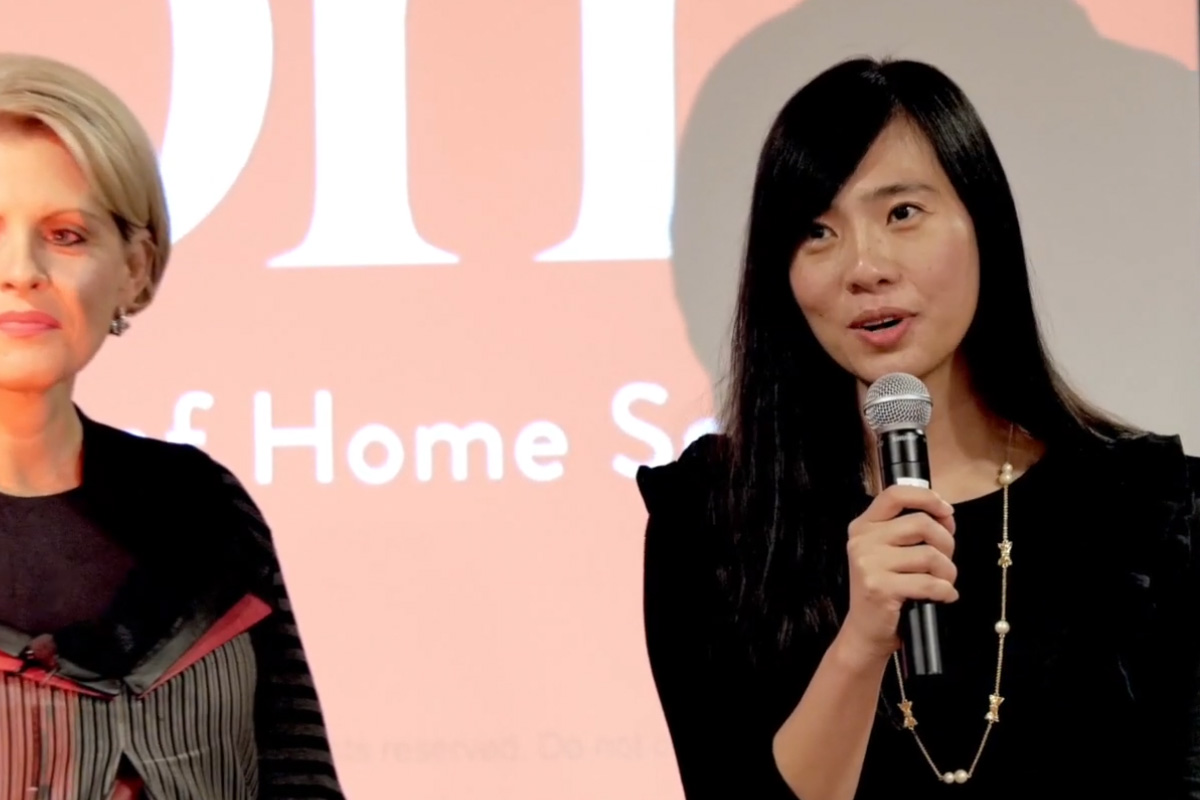
User Experience Research Lead Nan Ke talks about being a consumer reesearcher at Realtor.com Girl Geek Dinner.
Nan Ke: Magic. Thank you. So you probably heard the word consumer popped up many times, when Pam and Chung spoke. And then now, in the tech world, everybody says that consumer is the single, one single important person in the company. But I don’t know how many of you have noticed, actually, consumers, they never physically show up in our office and then when we’re making all these important decisions and then have these meetings, they’re not there. So my role really is to make sure that their voices are well heard, well studied, distilled, and actually taken into consideration in all the important decisions we make in everyday life.
Nan Ke: So from that, we all know that … so as a consumer researcher, I work in this industry for many years. So, to me, studying the consumer insights is really to understand the human mind and behavior. So, from my perspective, human mind is made of really, emotional and rational thinking. It’s a combination of emotional and rational decisions. And from all the industries that we work with, on the rational perspective, I don’t think that the making a purchase of home is that different with the purchase of the other every day life, for example, buying your car.
Nan Ke: So on one dimension of our research, is really based on understanding the functionalities, the functional part, of how people make their decisions. Like for example, what’s the basic needs? What information important to them? So that is the overarching foundation of how we build our websites, and then apps, to service important information to make sure that [inaudible], the information and filters are prioritized. And also, for example, people want to live in a safe neighborhood, so we provide a quiet heat map to them, we provide school information to them, so that is the functional part.
Nan Ke: But once it comes to the emotional part, that is, to me, far more important to understand than just to merely meeting their basic needs, right? And then on that end we actually found, making a purchase of home is fundamentally different from just buying a pair of jeans, or making grocery purchases. So for that, what we do is we follow consumers for days and even weeks, and even months, to observe what they do in their natural environment, in their daily life. All the decisions they make in their journey of buying a home, how they log their daily activities, how they record, their digital usage. What they do when you’re using the internet to search for information and we detail all of that into journey maps and experience map, and share that with entire company, to make sure that everyone has a line of understanding of what consumers are going through emotionally.
Nan Ke: So, to me, the home buying journey can really be described into three words; that is extremely stressful, it’s very emotional, and it’s very personal. So to say that it’s stressful because number one, it’s a big financial decision. It’s the one single biggest purchase that you’ll probably ever make in your life, so that means you can not make mistakes. If you make mistakes, you simply can not return it, or fix it. So, that creates a lot of stress and fear in the journey.
Nan Ke: And it is also emotional because it’s a long process, it takes from weeks, to months, and maybe years. So during that entire process, it’s just basically you don’t know what you want, you find out what you want, and you find out a house, and you find out that you can not afford it. So you find another house and you find out someone else has got it. So it’s kind of a rolling and constant emotional rollercoaster of optimism, pessimism, optimism, pessimism, just this process goes up and down for a very long time. It’s just very emotional.
Nan Ke: And it’s also personal because there’s no other commodity like houses, that is so unique. So there’s no two houses that are exactly the same and there’s no two families that have the exact needs to find out their dream home. So that makes this journey extremely personal so we have to be really careful when we’re using machine learning, for example, data science, to make recommendations. So we want to make the recommendations to the personal level, but we don’t want to make the wrong recommendation, because it’s so personal.
Sarah Staley: And those consumer insights must be incredibly critical in the role that we also then do, in all of our product designs. So Heidy, I know that you joined our company recently and come to Realtor.com with a truly seasoned eye and resume as it relates to design experience and the thoughtfulness from the user.
Sarah Staley: Talk to us about how that brought you here and how these insights inform your daily work.
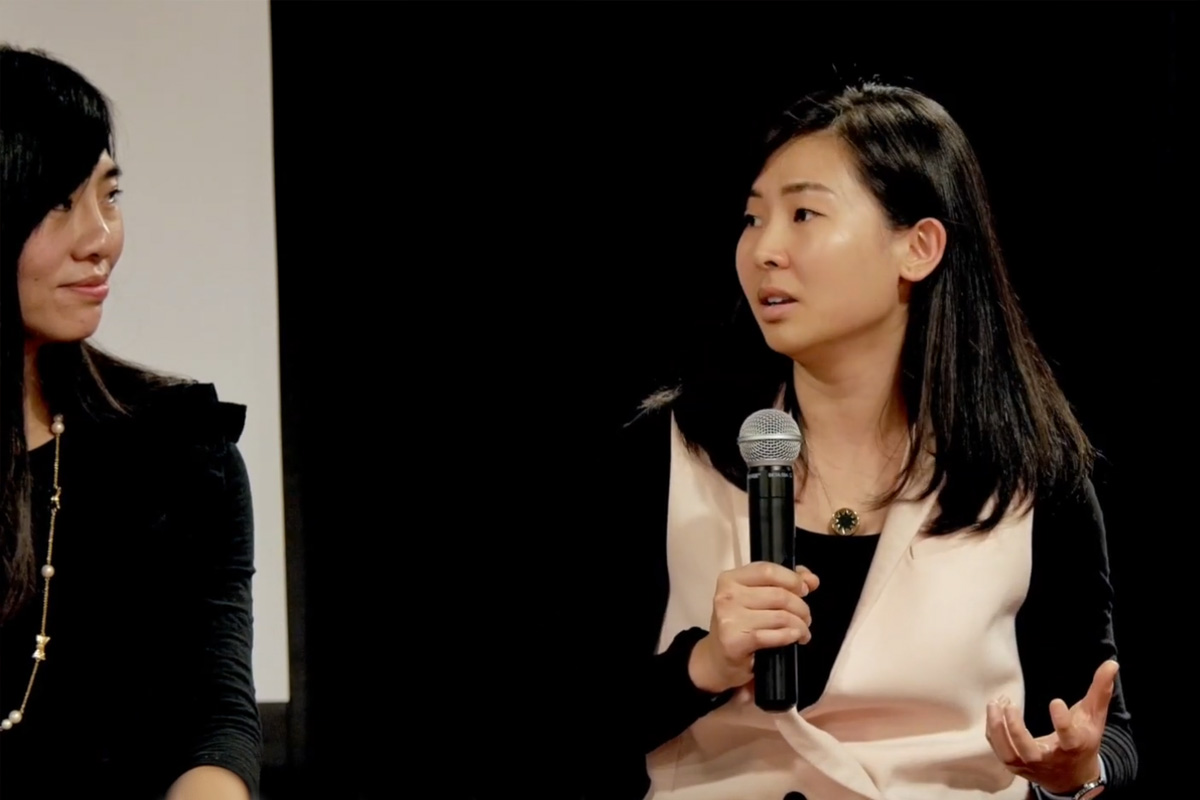
Senior UX Designer Heidy Kurniawan talks about the design process and customers at Realtor.com Girl Geek Dinner.
Heidy Kurniawan: Yeah sure. So with my daily role is, Nan and her team has such a big part in the UX team because she provides us with a lot of insights from the real customers, from the [inaudible], the real problems. So, for our team we understand that buying a house is such a big decision and it could be a long process and it could be stressful and for our team, it is very important to relate with that emotional level and to understand what are the real problems our users are facing.
Heidy Kurniawan: So, because in our role, we want to make sure that we are solving the right problems and that we understand, what are the problems that we are trying to solve for our customer? Because we want to make their life easier, not making them more stressful in their home buying journey.
Heidy Kurniawan: So, it is part of our design process that we want to validate our design, so we work closely with the user researcher team. We do a lot of user testing to validate our design decisions, whether it makes sense to our customers or not, and also we partner with the engineers, early on in the beginning, to make sure that our ideas and our feature visual design makes sense for them to be build within the given timeline.
Heidy Kurniawan: So, in our company, we try to support each teams because after all, we work as one team and the engineering team, is where they make all the magic stuff happens, and they’re the one that ships the product. So we try to calibrate with as many team as possible and we try to support them.
Heidy Kurniawan: For me, I feel very fortunate to be a part of this team because we have 63 million visitors and really feeling fortunate to be a part of the home buying journey, and also to have a team that is very supportive and this is the team where I can make a huge impact, and I have a such an awesome manager, which is Sam.
Heidy Kurniawan: So, yeah I feel really grateful and fortunate to be a part of this journey and then to be the designer for Realtor.com.
Sarah Staley: That was well done, by the way. The kudos to Sam. Yeah, nice, she gets a job, spot bonus.
Sarah Staley: Hey Sam, so are you ever worried about for all of the work that we see your teams doing and all the emotion that comes with it, do you ever worry that the work that we’re doing doesn’t have a significant impact and that it’s not making a difference in the home buying journey?
Sam Weller: Never.
Sarah Staley: Okay, great.
Sam Weller: A little bit.
Sarah Staley: Alright, and then we’ll go to Sonali. No, I’m kidding.

Senior Manager Sam Weller speaking at Realtor.com Girl Geek Dinner.
Sam Weller: No, I’d just like to echo what Nan and Heidy said, and especially when you’ve got such incredible team and colleagues. We’ve got an incredible research team, an incredible design team, they really take the guesswork out of it. We have enough insights that we sort of do know what’s going on out there. They’re relentless in talking to people. Like, later on if you’re talking to Heidy, she probably gonna show you a prototype of something or do some user testing with you here in the corridor.
Sam Weller: But it’s that ethos, it’s that talking to people, you alluded to it before, Sarah, it’s conversations that’s really important. And in design, and a lot of that, and product, it’s really just about having that conversation. That classic Henry Ford quote about if you asked customers what they wanted would they say faster horses? Similar to that is we don’t ask people oh hey, how’d you go buying a house? Or necessarily, tell us about how we can make the house buying better. Because it is, it’s an awful process to go through.
Sam Weller: We really listen to tell us about what you went through. Tell us about the really hellish moments, tell us about the worst part of it, tell us about the best, the most euphoric part, and then we sort of listen to that and then we say, well, that really awful part? I think we can fix that. So it’s about conversation, it’s about talking, it’s about testing, it’s about always being on top of what’s going on in the market, what’s going on in technology, but most importantly, what’s going on with our actual users.
Sam Weller: I literally don’t do anything. All these wonderful people do all the work so, yeah, we’re just very lucky to have such a great team.
Sarah Staley: And then Sonali, you’ve got quite a portfolio that you’re looking after these days as it relates to our web based and mobile experience. So, what does that remit look like? What does that scope of work look like from an engineering and a tech direction, as it relates to Realtor.com?
Sarah Staley: You know, having been … we revolutionized digital real estate 20 years ago. How do you continue to innovate on that year after year?
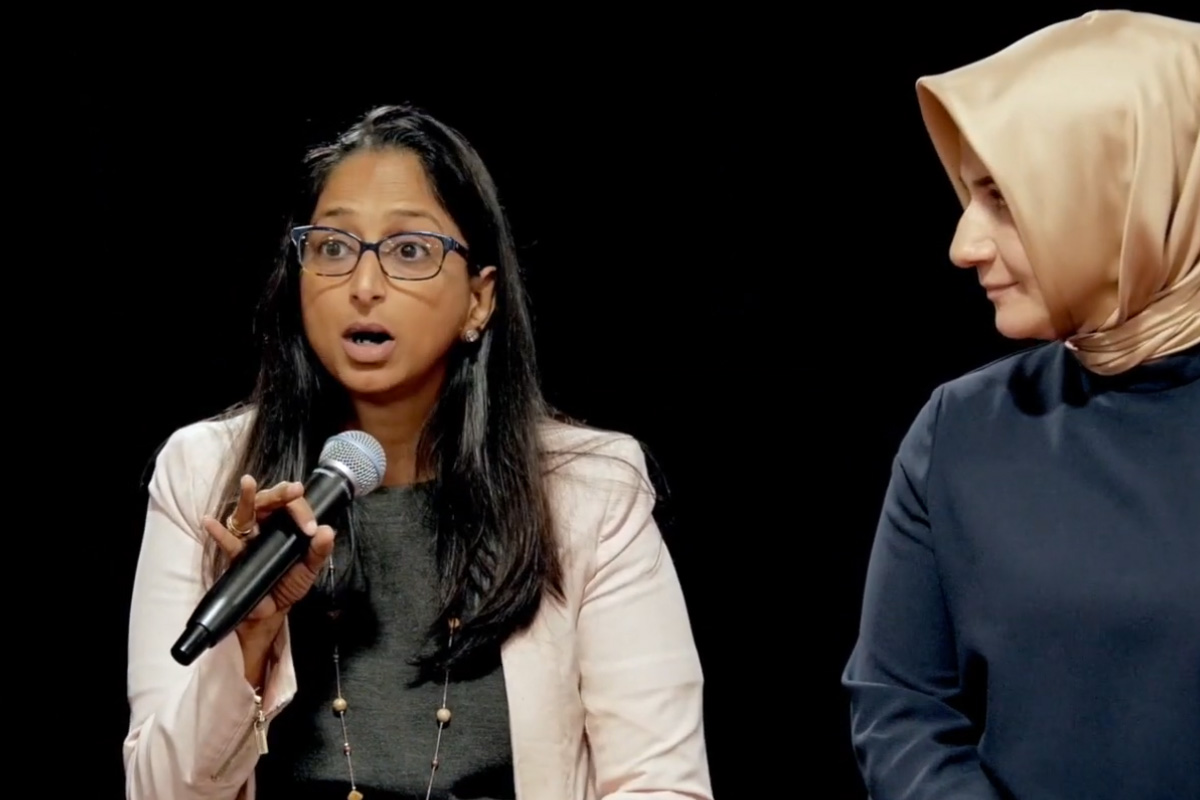
Engineering Leader Sonali Sambhus speaking about patent-pending technology at Realtor.com Girl Geek Dinner.
Sonali Sambhus: Yeah. It’s a great question, but before I answer that. I meet a lot of girls in the room, a lot of girls on stage, I did want to mention that at Realtor.com, we do foster a lot of inner women, leading women in the work force. Not answering your question yet, but I did want to bring that in.
Sonali Sambhus: So about two years back, we actually formed a group called Inspiring Women at Realtor.com. And really bringing all of the women community together, providing leadership and mentorship a part for these women. So just want to tell you out there, for those of you who are wanting to be part of our family, it’s obviously a great place to be for women and girls, and for great guys like Sam as well.
Sonali Sambhus: So that’s that, and now so to coming to your question, Sarah. I think in terms of technologies, in engineering at Realtor.com, we have a plethora of technologies. So starting from our back end, which is now entirely in the aid of [inaudible], are the machine learning data science as well as to our front ends, where we have totally native IOS and android apps, as well as the latest technologies and webs. So a plethora of technologies that we work on.
Sonali Sambhus: Just in the year and a half that I’ve been here, I wanted to highlight some wins that I see in engineering. So we put together a massive AWS architecture for which Amazon sort of gave us a pat on the back saying, “Guys, you’re solving complex problems at scale with the right architecture.” So I think coming from Amazon guys, that was a great certification. Not just that, a lot of my principle engineers from my team, is going to be presenting at AWS Re-invent and he was invited of Amazon to do it, in November. So I think that speaks of the engineering innovation culture that we have.
Sonali Sambhus: We also have a lot of patent pending technologies and some patented technologies at Realtor as well. So last year, we released on our Android apps, a technology for augmented reality, where you could really take your phone, point it at the street, and you kind of see like Pokemon Go like little carts, where you can literally … and you guys should try. You should download an Android app, and go out on the street where you want to buy a house and just point it out there, you will be able to see little cards with little home values on them.
Sonali Sambhus: So I think that just really speaks to the culture that we have in engineering, which is not just hey, let’s just develop software but let’s innovate and let’s bring in patent pending technologies to the company.
Sonali Sambhus: Hope that answers your question.
Sarah Staley: Absolutely.
Sarah Staley: Now Latife, you’re in this space of big data. Which is, really sort of the glamorous world out there. Certainly is, I go to sleep just thinking about big data. It’s certainly though, from a hiring standpoint and from the nature of our business, it’s frothy work. Why did you choose Realtor.com to come to and apply your expertise? What does that world look like here versus at others?
Sarah Staley: ‘Cause I think that that’s a very unique perspective, that often for many of us, rounds out why we landed here.
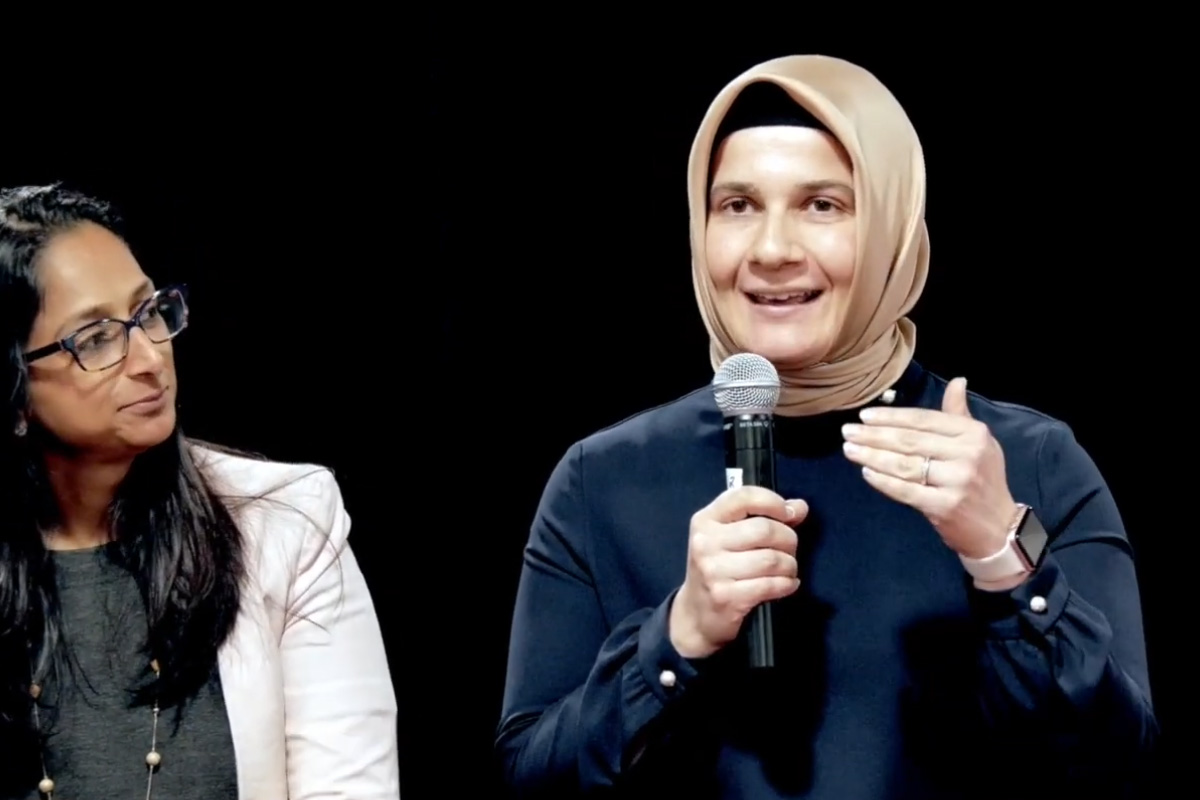
Principal Data Scientist Latife Genc Kaya speaking about data science at Realtor.com Girl Geek Dinner.
Latife Genc Kaya: Well, I went through the pain, the real pain of home buying and wanted to make use of the insights and domain knowledge that I gained through the process to help other people buy their dream homes. So I knew that I was gonna work in a digital real estate company in my next role. So given that, why Realtor.com but not other companies?
Latife Genc Kaya: There’s a number of reasons for that. One is in companies with large established data science teams, majority of the time goes into improving models that already exist. Right? Something is already solved and you’re just trying to make this much impact on top of that. Here, however, we have untapped opportunities to innovate. And every project comes with a significant opportunity to have impact to make to achieve that great user experience that Chung was talking about.
Latife Genc Kaya: So that’s one thing. Another thing is, in other companies, well, most companies, I’ll say, data scientists work in limited verticals. So if you’re working in image classification, that is only related problems that you’ll be working on but you’ll not be exposed to other type of problems. Data science is very broad, right? In our team, our team is working on a broad range of problems, from image classification to text mining, pricing, so…. Customized ranking of the home search results for example, for each user. So personalized home recommendations for each user.
Sarah Staley: So it’s meaty stuff? You’re not just making a small impact.
Latife Genc Kaya: No, no. And everyone in our team can work on different projects, right? Recently I’m working on pricing, but I’m not bonded with that. So it’s a great opportunity for a data scientist to be exposed to a wide range of problems, because your learning curve is always steep then.
Latife Genc Kaya: All these projects require strong computing power and Realtor.com is a power user of AWS, Amazon Web Services. So, these projects require a computing power but also ability to handle very, very large data sets. Which is what we use to build all these models and all projects. So we have access to AWS services and several powerful computers to both build and productionize our models, which is important and a very good resource for data scientists. It’s a dream actually, not every company has that.
Latife Genc Kaya: So, another reason is we have strong higher management support for us to be more data driven company. And last but not least, I have another reason, I work with a great team. Where it is very important for me. Work environment is very, very important and I feel lucky to be working with incredibly talented and nice, in capital letters, and friendly, in capital letters, people in my team.
Sarah Staley: Actually, I so appreciate that, thank you. Yeah, we’ll take the applause, right? For as much as we love the nature of our vertical and the expertise that we bring to work, it really is about the people that you share it with. I actually, can we just go down the row real quickly and you guys just give me a quick sound byte about why you came to Realtor.com?
Sonali Sambhus: So I think I can, so I’ve done a number of start ups before, I’ve done three startups for the large companies, a plethora of different companies in the valley for the last 20 years. I think what is most exciting to be with Realtor.com, if you go to a start up, you really in a very sort of small struggling environment, if you go in a large company, you’re a small fish lost in a very big pond. I think Realtor.com is special because we’re kind of a mid-sized company that’s on a scaling pad and it really allows you to create that impact without being sidled into a sort of small fish big pond problems. That’s why I picked Realtor.com.
Sarah Staley: Sam, what about you? It must’ve been very easy just to move down the street and head on over to Realtor.com.
Sam Weller: Yes, 8,000 miles across the Pacific. Yeah, a few years ago actually when I worked for a company in Australia, who bought into a [inaudible] move here. I remember my CEO at the time, came in and she actually stood perched on top of one of those wheelie desk chairs, and I was like oh my God, the CEO is gonna break her neck right in front of us. But no, she was quite poised and she said, we bought this company in the US, and I’m like, I know what I’m doing next year.
Sam Weller: I took a couple years of hassling with Ryan, our CEO, and I was badgering and emailing, emailing please, please can we come over. And then yeah, eighteen months ago, my wife and I packed a couple suitcases, literally crossed the Pacific, had no idea what was gonna happen. We rocked out the first day and here we are, and we’re sticking around another two years. That’s how much we love it.
Sam Weller: But, I just gotta cover all the points here. I think helping 60 million Americans make the biggest decision of their life, is super powerful and super motivating and driving. But also the ability to have an individual impact, like just recently, we relaunched a new redesign of the homepage. Heidy and I did that, and it’s like, there it is, it was just the two of us in terms of what it looks like and it was a great team who built it. But we got to have that direct impact and that’s quite incredible so … yeah. It’s great.
Sarah Staley: What about you, Heidy? You came recently.
Heidy Kurniawan: Yeah, so I actually use to live in LA. It wasn’t really an easy decision for me because I really, really love LA. I’ve come to this part of California a few times and I feel like, oh they don’t really have anything here compared to LA. But, I think for me, it’s more about the mission of the company. I think the mission is very noble which is to make Americans make one of the big decisions in their lives, so that is why I really love doing my job. That’s why I’m really passionate in helping to achieve the missions in the company.
Heidy Kurniawan: I feel really glad and I think I’ve made the right decisions moving here.
Sarah Staley: That’s fantastic, and what about you, Nan?
Nan Ke: So two things, first I want to echo what Sonali just said. At this company, it’s a really great combination of being big and being small. I say being small because here, it’s kind of small enough you can make a lot of personal relationships with your stake holders and then to everybody’s roll up their sleeves and get things done. Sort of feeling like a start up but it’s so bold and so excited about the latest technology.
Nan Ke: And at the same time, it’s big enough, so you get all the resources to get your job done. Like, we got you as a researcher at go around the country, to go to the research meetings that I’m interested in. Same for the data team, technology team, product team, and we all can go to the training and conference that you get to know what’s going on there. To learn about the most cutting edge technology.
Nan Ke: So I really truly appreciate that as a researcher. And then the second thing is that I have to do the plugging for researcher stuff. Who here is a researcher? User [inaudible] researcher, market researcher, oh wow, I see a few hands, hooray. So a lot of people tell me that you have the most exciting job in the company that you got to learn about what people do and learn about what’s going on in people’s mind, talk to consumers, and you get paid.
Nan Ke: So I have to say, ’cause I’m so obsessed with understanding human being, understanding human behavior. And I’m also so obsessed with some technology. I am married to a PhD in Mathematics. That’s how crazy I am. This is, I think here is the perfect intersection where humanity meets technology and science. I love working here.
Sarah Staley: We’d love to take a few of your questions. Monte, if you want to come up and get the mic from Latife real quickly. I’ll tell you guys, while she’s getting the mic, and raise your hand if anybody has a question.
Sarah Staley: The reason that I came to Realtor.com is I guess it was almost 20 years ago, I was working at Apple and I’ve work in a number of luminary brands across the valley and fast forward, the Chief Marketing Officer here and I worked at Apple then, and I was trying to figure out what I was gonna do next. And I think, we all get incredibly attracted to these brands that have this halo effect, where we hear about Metallica coming to play during lunch in the quad, or you know, the free lunches or all that stuff. And I actually went and talked to a lot of those companies, I even sat with a number of the CEOs because I wanted to know straight from the source, what those companies were like.
Sarah Staley: And I just, the juice wasn’t worth the squeeze every time I sort of went and had those conversations. And Nate, our CMO, was like, do you want to come work with us? And I got here, and the people kept me. And I couldn’t be more sincere about that. And I think the testimonies that we all shared here today, we wouldn’t be on stage if we didn’t believe that whole heartedly.
Sarah Staley: I love you, Tife.
Sarah Staley: And so, we’re just really glad you’re here and would love to take any of your questions because we think that this is a really special place and would love to hear from you.
Sarah Staley: Monte, we’ve got a question right back here, and we’d love to get a mic to you.
Audience Member: Hello, I don’t know if you can hear me. So you guys mentioned that, or you ladies mentioned that, you have a woman ERG, and you started that two years ago. I’m curious what prompted that and who kind of initiated that development? And why it took, ’cause you guys have been in business now for 20 years, why it took 18 years to do that?
Sonali Sambhus: So no guesses on who started it, it was women of Realtor.com, right? So it was all of us coming together. Why wasn’t it done in the past 18 years? I wasn’t here to witness that or answer that, but what I can say is I think, from an HR perspective, as the entire leadership perspective, there’s an immense support for charting that initiative. But really, we do a bunch of things.
Sonali Sambhus: One, we provide a platform for women to connect with each other. Second, we actually raise topics which are there through all of women at heart. Whether it’s work life balance, whether it’s imposter syndrome, communication, confidence, all of those issues that relate to all of us. And so really third is sort of one on one mentorship opportunity. So, don’t know what happened in the past 18, I can tell you what’s gonna happen in the next 10.
Sarah Staley: I can just add to that real quickly. You know, a couple years ago, there was that report that came out that shined a light on what a number of larger companies in tech space, how they were not coming up with the right numbers as it related to equality in the work place and I think that, that really put a spotlight on some of the more notable brands that we all thought would have been sort of, glowing in their numbers. And so, I think there were a number of companies at that time, that had to stop nasal gazing and come up with solutions quickly.
Sarah Staley: And I think that we, I think smaller companies often times, we just think, perhaps, that we’re okay and so we took pause in that moment, and also said, you know, we’ve really got to be thoughtful about this. And so, whether it’s in our Pulse surveys with our employees or in our surveying with our own women and people and diversity. We’re really committed to having the conversation.
Sarah Staley: So I don’t think that that’s any excuse for not having addressed it before, but what I can say is that we’re certainly a part of a family that wants to be our best, and we’re doing it for the right reasons at the right time.
Sonali Sambhus: Yeah, the other thing that I’d like to add is I think the gender ratio female to male at Realtor.com, I believe is around 30%, I’m not entirely sure. But I think I do know that we are better than most companies in the industry here today.
Sarah Staley: Any more questions? We’d love to have the conversation with you.
Sarah Staley: We have some questions up here.
Audience Member: Hi, so there’s a lot of competition in the real estate area. You know with the Zillow and Trulia. How do you compete with the other companies that are out there trying to sell real estate?
Sonali Sambhus: So one thing I’d like to add is I think at Realtor.com, we have a philosophy of not being a me too of any other sites. If you know it’s a crowded space, there’s a lot of competition, we aren’t striving, or in fact attempting to not copy any of our competitions. We believe we have our own unique strategies, to get there, where we want to get to.
Audience Member: Okay, since I’m closest to the mic, I will take the next question. Thank you for sharing your personal and professional stories. Since you’re trailblazing in the technology space and in the problems space, and understanding consumers, I was wondering, why only US? Do you have plans going global because this is a common global problem?
Sarah Staley: Do you want to address that, Sam? Anybody?
Sam Weller: That’s a great question. So we are part of a global property network in a way. Part of our company is owned by a large property portal in Australia, which has a footprint all across Asia, a part of Europe, and also India. I think we’re able to sort of share intellectual property, and ideas, and UX patents, and technology, and our approach to data science and things like that. There’s a lot of knowledge sharing, there’s a lot of random Slack conversations at 3 o’clock in the morning from Australia back to here and dancing around the world. So, I think being able to share that knowledge, certainly allows us to keep up to speed with what’s happening in other countries.
Sam Weller: But in terms of yeah, corporate strategy –
Sarah Staley: Yeah, no we were also talking yesterday about we were also, is employees talking with our CEOs yesterday about the attractiveness of both the Canadian and Mexican markets.
Audience Member: Oh thank you. Hi, I actually was in the real estate market and it’s very fresh in my head. And it moved really, really fast. And I was really hesitant to use an app because I knew it would probably consume me. But I caved in and I had to, because my husband was using it as well. So one thing I noticed was there were some differences between the various sites. And sadly actually, things move so fast that I could only, I mean it felt like I had a split second to choose which one I was going to use right away and Realtor.com was not one of them. And it actually didn’t surface.
Audience Member: That said, could you talk to me about how the MLS, or working with brokerages, how does it impede on information that you provide and actually providing best information and actually having the information that you provide, actually make the consumer decide that yes, I’m gonna use Realtor.com for that reason because you guys have that information nobody does.
Sonali Sambhus: Yeah, so Realtor.com has the maximum number of MLSs of all of our competitions, such as you spoke about. We have about 800 MLS listings that we have integration with and we have the maximum data available from all of these portals. Not only do we have the maximum, we claim to be the fastest in the industry today, to get the information to you. So that’s two.
Sonali Sambhus: Number three, besides the data that is published by MLSs, we are trying to generate value with what we call User Generated Content. So whether it’s about this is the most viewed property, is the hardest property in the market, whether it’s about this is the property which is distinguished because it has a pool or the largest backyard.
Sonali Sambhus: So, I think the short answer to your question and move on, we have the maximum number of MLSs that we integrated with. Two, we are trying to augment that with what we call proprietary data, essentially user generated content.
Audience Member: Follow up question. And how do you, one of the things I’m always noticing was how is my information being used and tracked on the back end?
Sonali Sambhus: Yeah, that’s a great question. Maybe we can take it offline and I’m happy to provide how we are actually anonymizing your information and your privacy’s protected.
Audience Member: Thank you.
Yvonne: Hi, my name’s Yvonne. Thank you so much for hosting this event. This actually is a question for Nan, I’m a user researcher too. With 63 million users per month, obviously there’s a lot of data, and with executives and high level positions, they are very data driven. So I want to ask you how do you … do you run into conflicts with the usability studies or the studies that you have and how do you convince them to believe in your findings?
Nan Ke: So this is a very good question. So actually, the straight answer’s that it’s not easy. It’s actually very difficult. So first of all, we want to work from getting alignment from all levels, right? We want to first make sure that not just revenue, not just [inaudible], not just page views, are our critical metric to define our success.
Nan Ke: We want to get alignment from higher up to everyone in the company that’s getting … customer satisfaction is also one of the critical metrics that defines our success. And the other way is to really convince everyone is to get them to the ground, to participate in all of the research and then when we talk to consumers, when we go out to Texas, to Sacramento, to New York, to observe how people do, get as much involvement as possible so they can actually see it and listen to what the consumers have to say. Sometimes they’re like, wow I had no idea that they feel this about our product. That’s actually changes a lot.
Nan Ke: And then, the [inaudible] just have to, you have to be really persistent and then sometimes repetition does work, and constantly appearing in meetings and then just running into people like, hey when you gonna get this consumer ask into your road maps? Just repeatedly and persistently do that, and that makes the difference too.
Sarah Staley: We’d love to answer more of your questions but we also want to enjoy some hospitality with you and get to know you more as well. So, we’re gonna step off the stage and hear a little bit more from Pam and hope we get spend more time with you in the back.
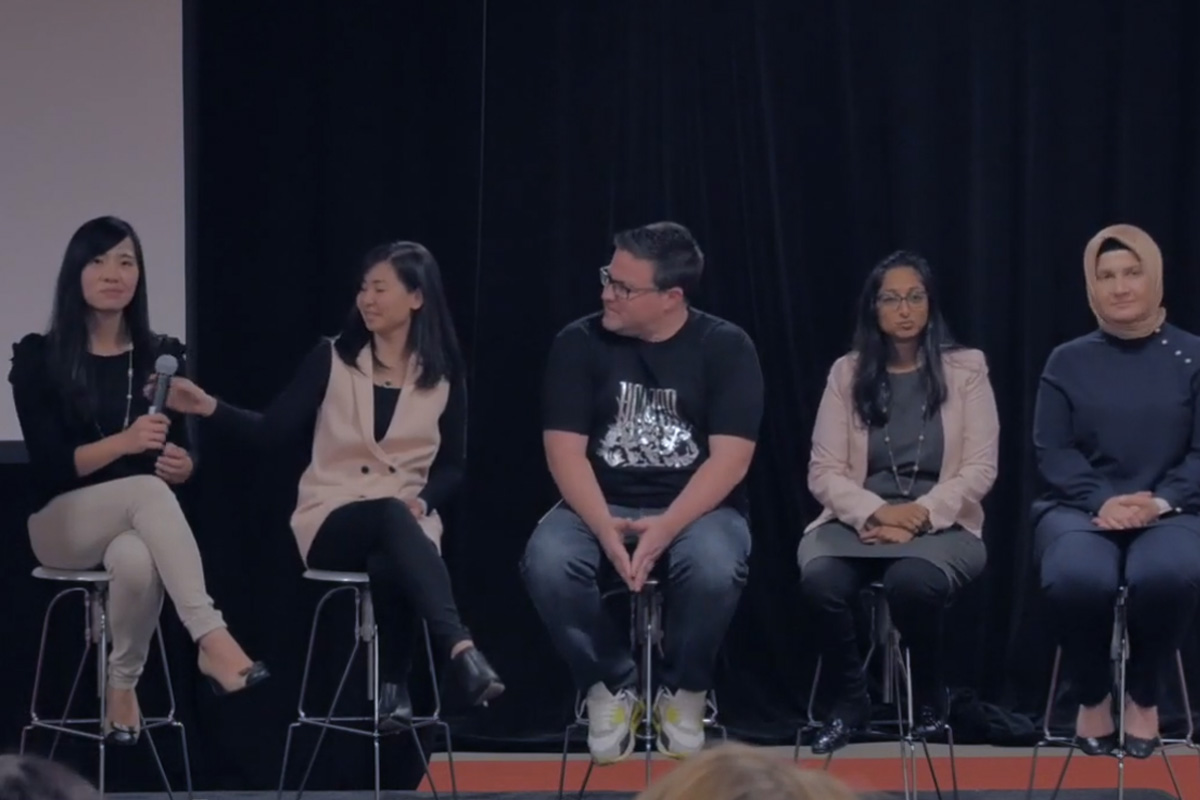
Realtor.com girl geeks: Nan Ke, Heidy Kurniawan, Sam Weller, Sonali Sambhus and Latife Genc Kaya at Realtor.com Girl Geek Dinner.
Our mission-aligned Girl Geek X partners are hiring!
- See open jobs at Realtor.com and check out open jobs at our trusted partner companies.
- Does your company want to sponsor a Girl Geek Dinner in 2021? Talk to us!


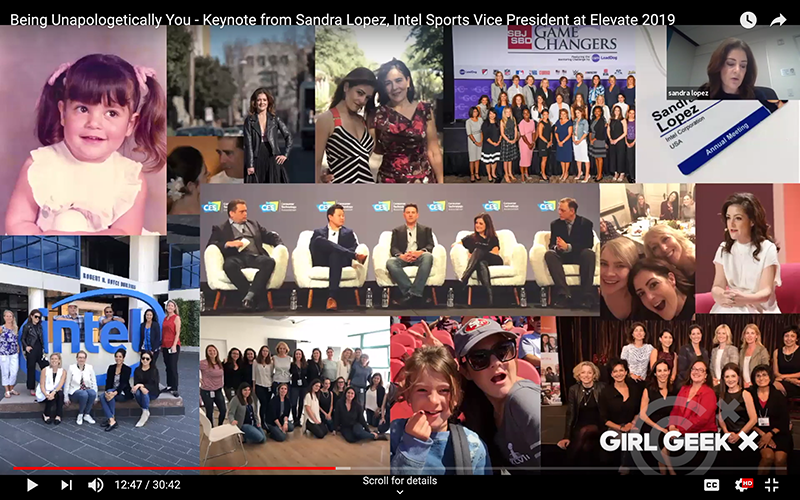
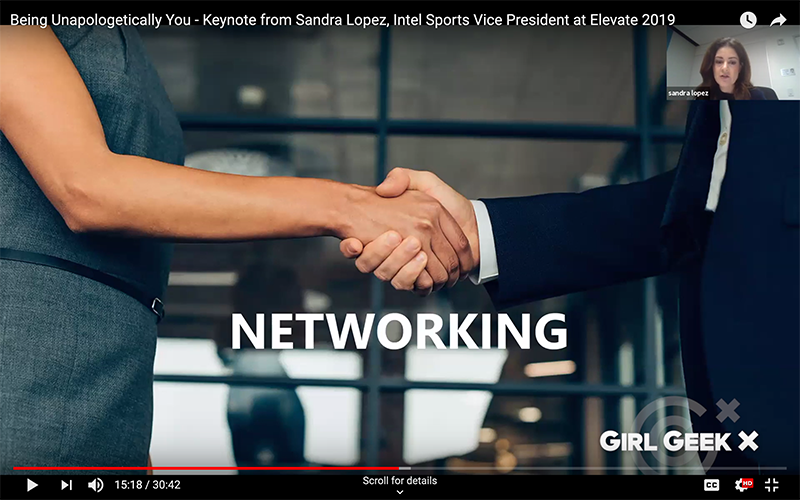
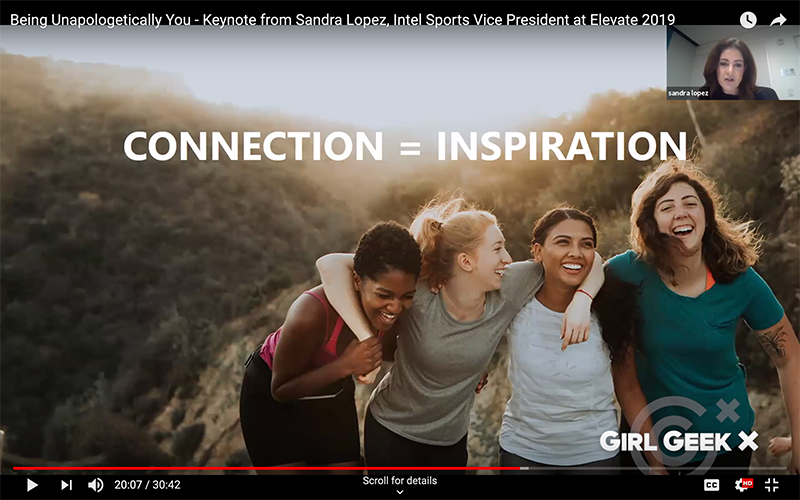
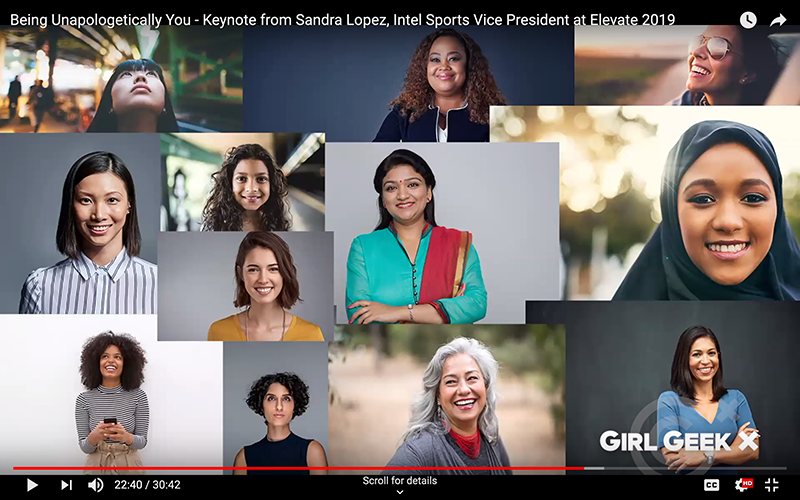

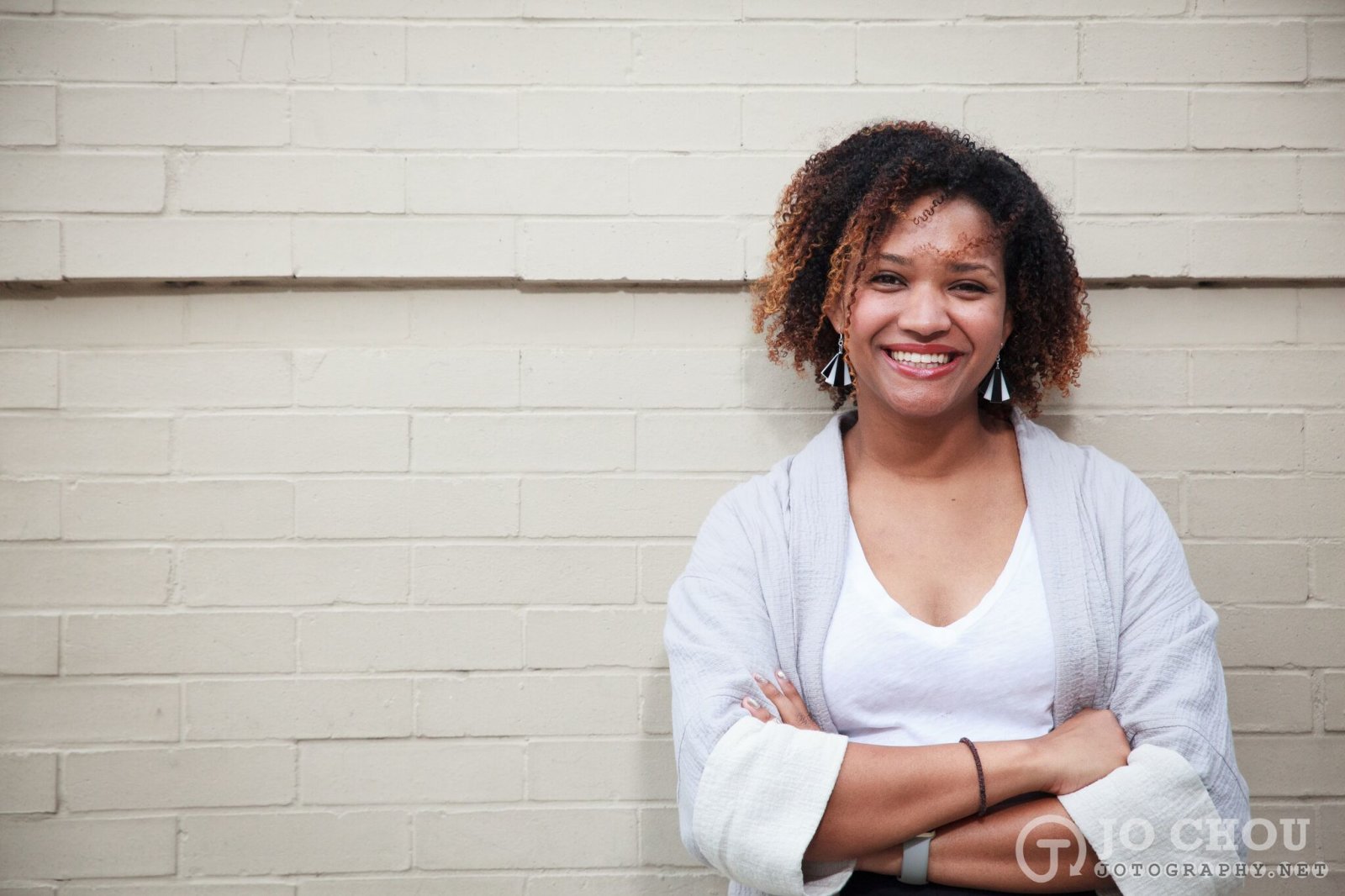
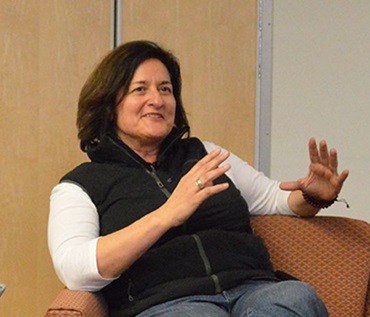
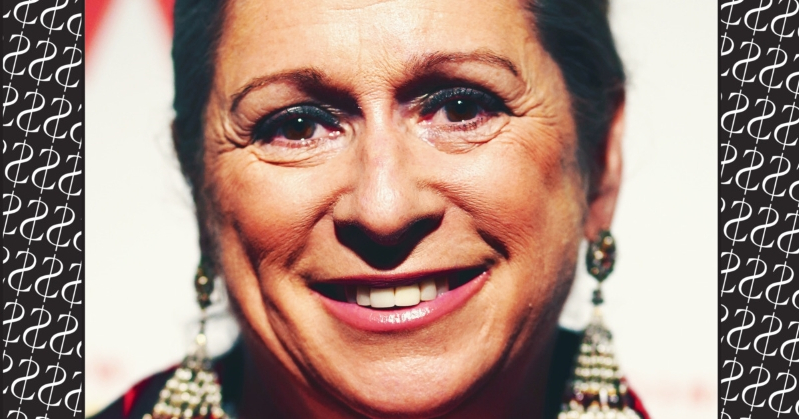
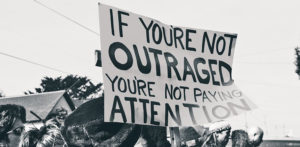
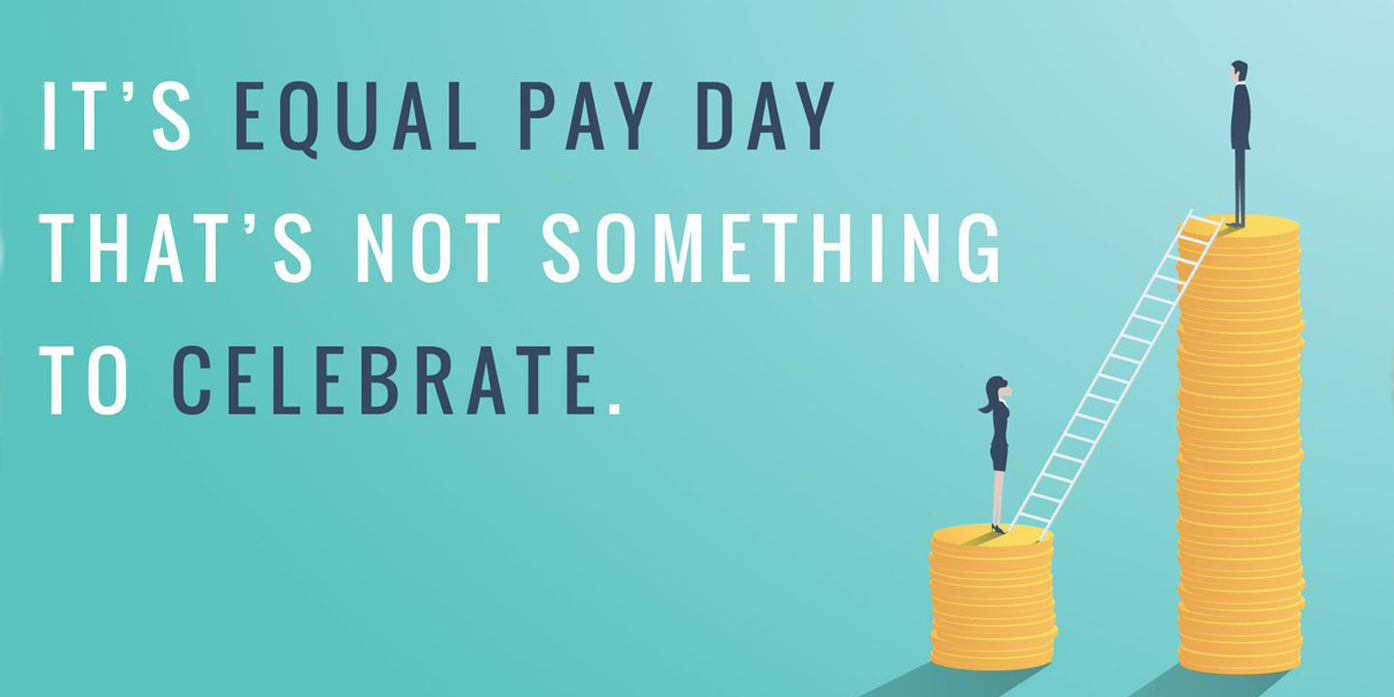
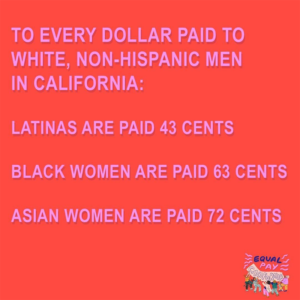 “The first Equal Pay Day of the year arrived on March 5 for Asian-American Pacific Islander women, denoting that the group earns 85 cents on the dollar relative to men – the smallest pay gap. But even that statistic can obscure the challenges faced by lower-income AAPI women, specifically Thai, Cambodian, Nepalese, Laotian, Hmong, and Burmese-American women who earn closer to 60 cents on the dollar. Next is the April 2 Equal Pay Day, averaging together the incomes of all racial groups for the 80 cents on the dollar gender wage gap. Equal Pay Day for white women, denoting a slightly larger gap, follows this year on April 19, according to the American Association of University Women. After the April dates, there’s a 4 month wait until the next Equal Pay Days roll around – a sign of how severe the pay gap is for black women, Native American women, and Latina women. Black Women’s Equal Pay Day will fall on August 22, followed by Native American Women’s Equal Pay Day on September 23, and Latinas’ Equal Pay Day on November 20. That order means that Latinas face the largest wage gap, of around 53 cents on the dollar. Black women earn about 61 cents on the dollar and Native American women earn about 57 cents on the dollar.”
“The first Equal Pay Day of the year arrived on March 5 for Asian-American Pacific Islander women, denoting that the group earns 85 cents on the dollar relative to men – the smallest pay gap. But even that statistic can obscure the challenges faced by lower-income AAPI women, specifically Thai, Cambodian, Nepalese, Laotian, Hmong, and Burmese-American women who earn closer to 60 cents on the dollar. Next is the April 2 Equal Pay Day, averaging together the incomes of all racial groups for the 80 cents on the dollar gender wage gap. Equal Pay Day for white women, denoting a slightly larger gap, follows this year on April 19, according to the American Association of University Women. After the April dates, there’s a 4 month wait until the next Equal Pay Days roll around – a sign of how severe the pay gap is for black women, Native American women, and Latina women. Black Women’s Equal Pay Day will fall on August 22, followed by Native American Women’s Equal Pay Day on September 23, and Latinas’ Equal Pay Day on November 20. That order means that Latinas face the largest wage gap, of around 53 cents on the dollar. Black women earn about 61 cents on the dollar and Native American women earn about 57 cents on the dollar.”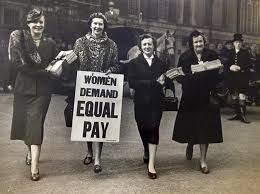
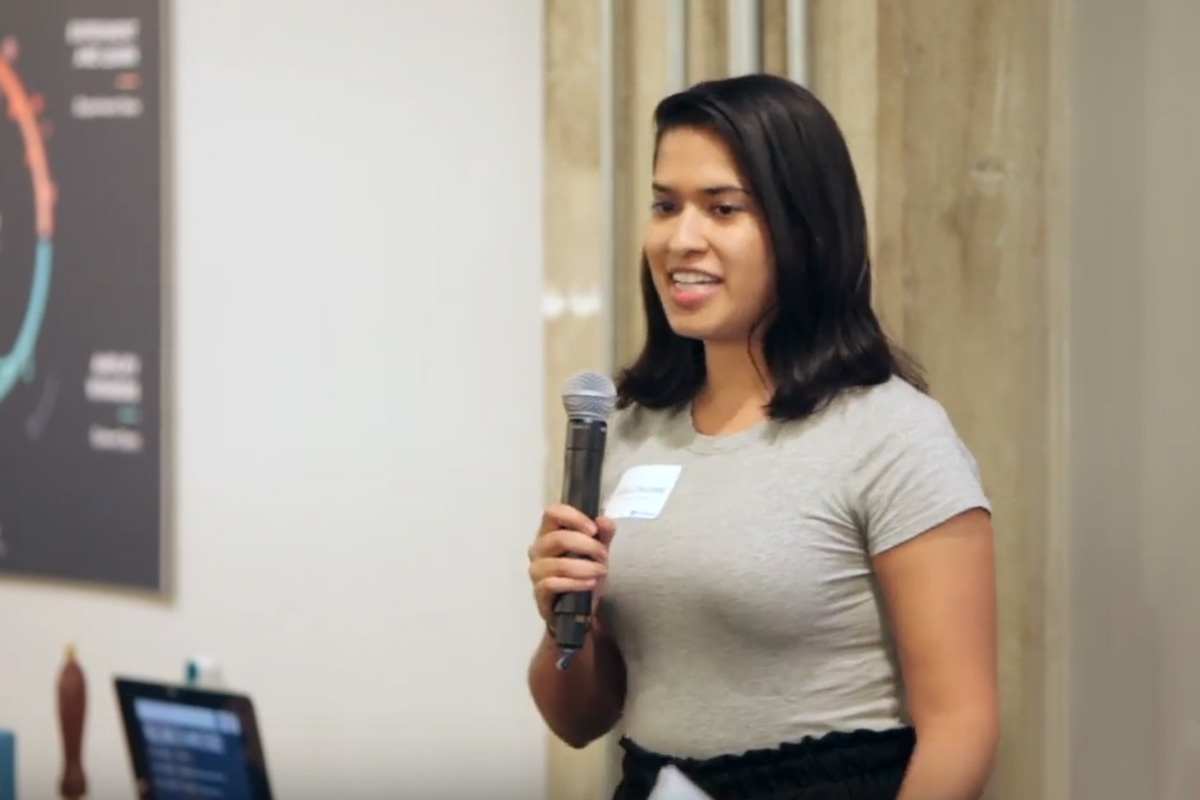
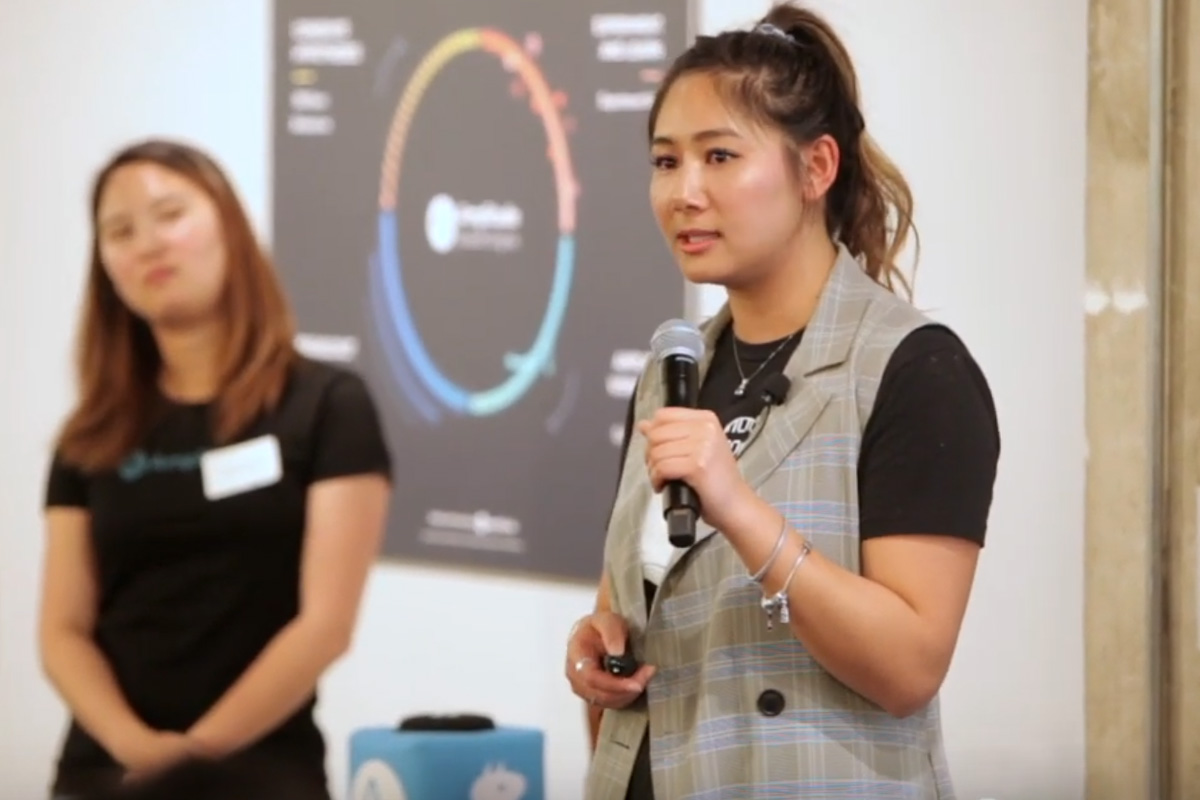
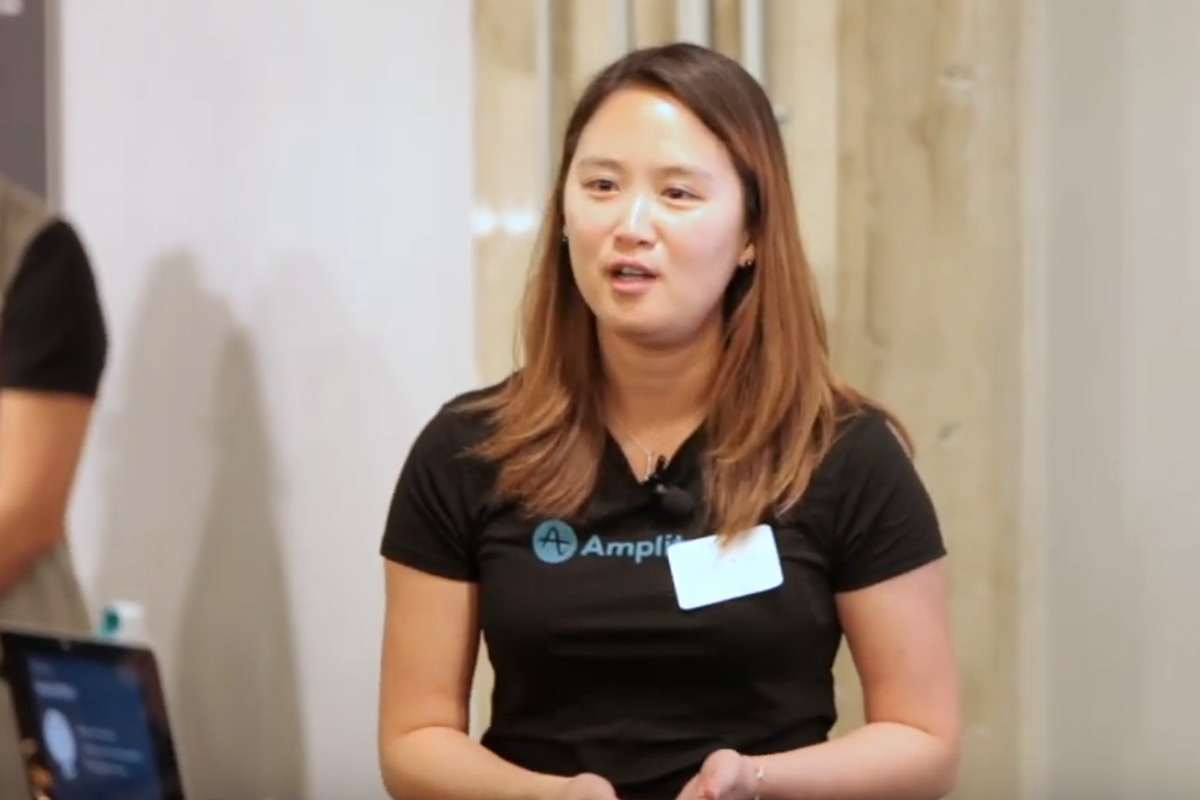
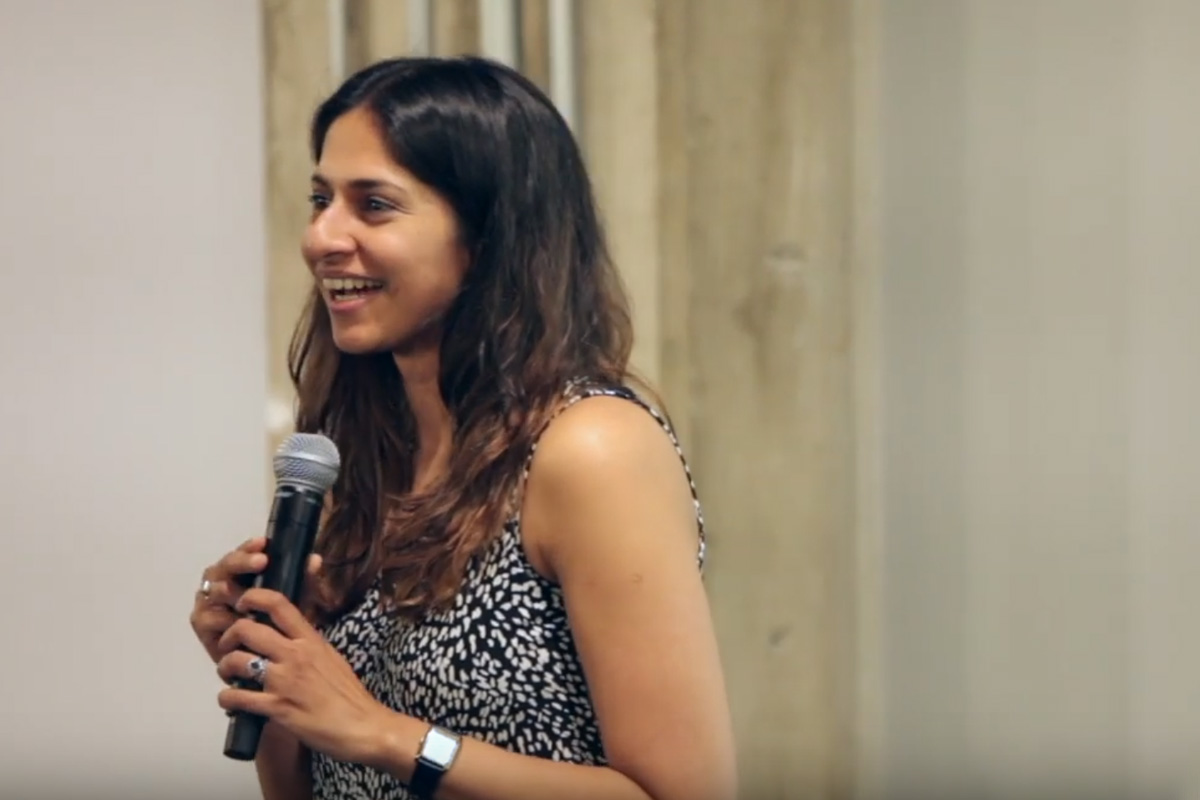
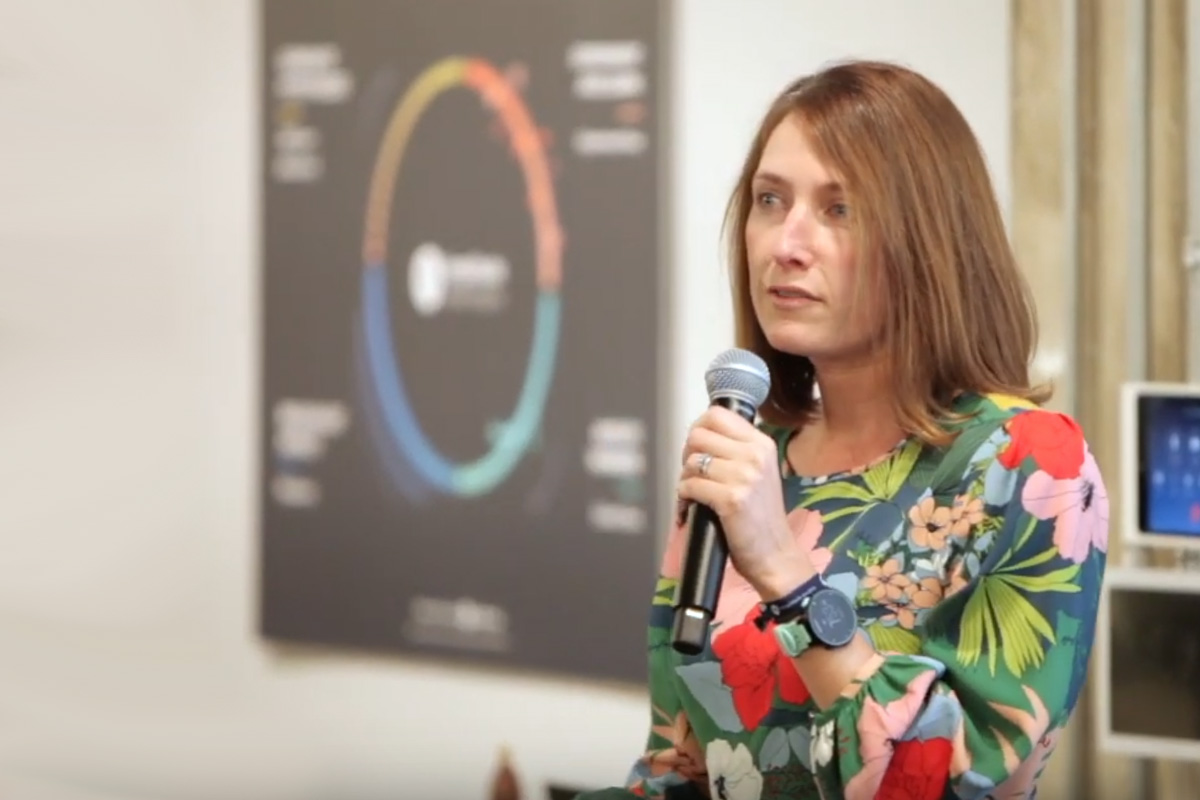
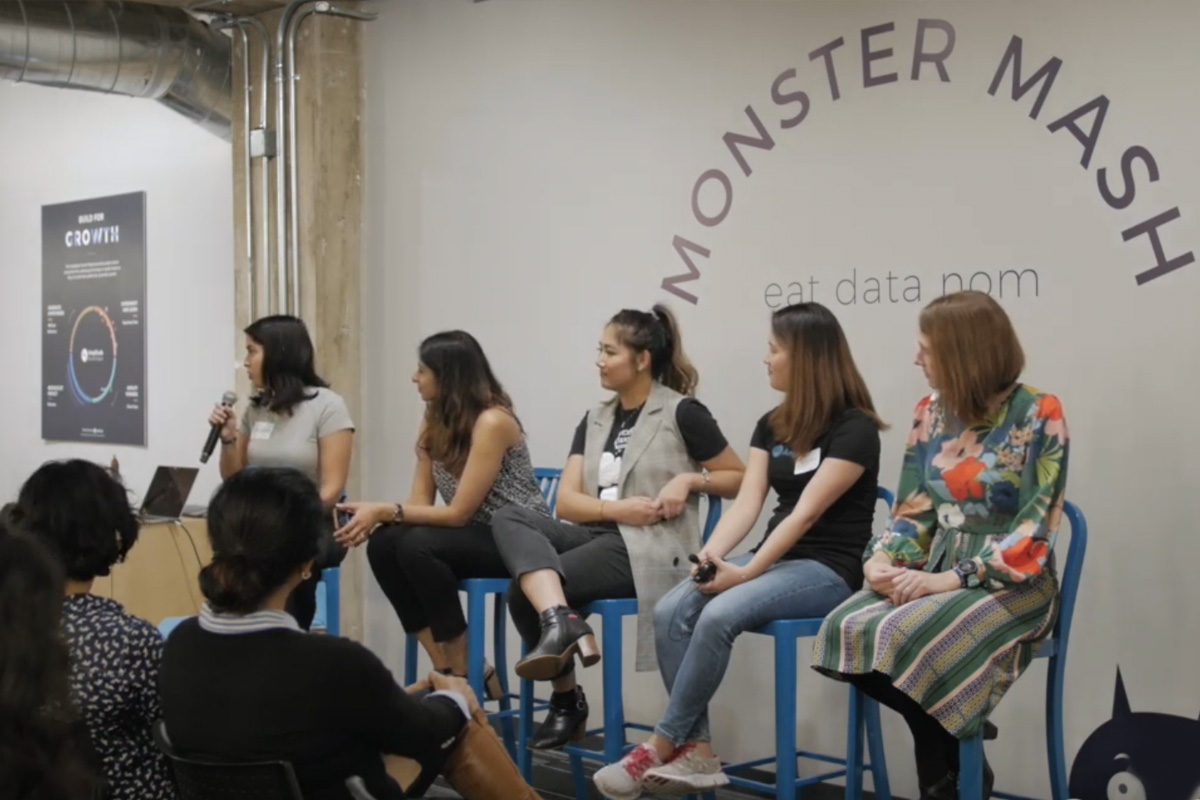
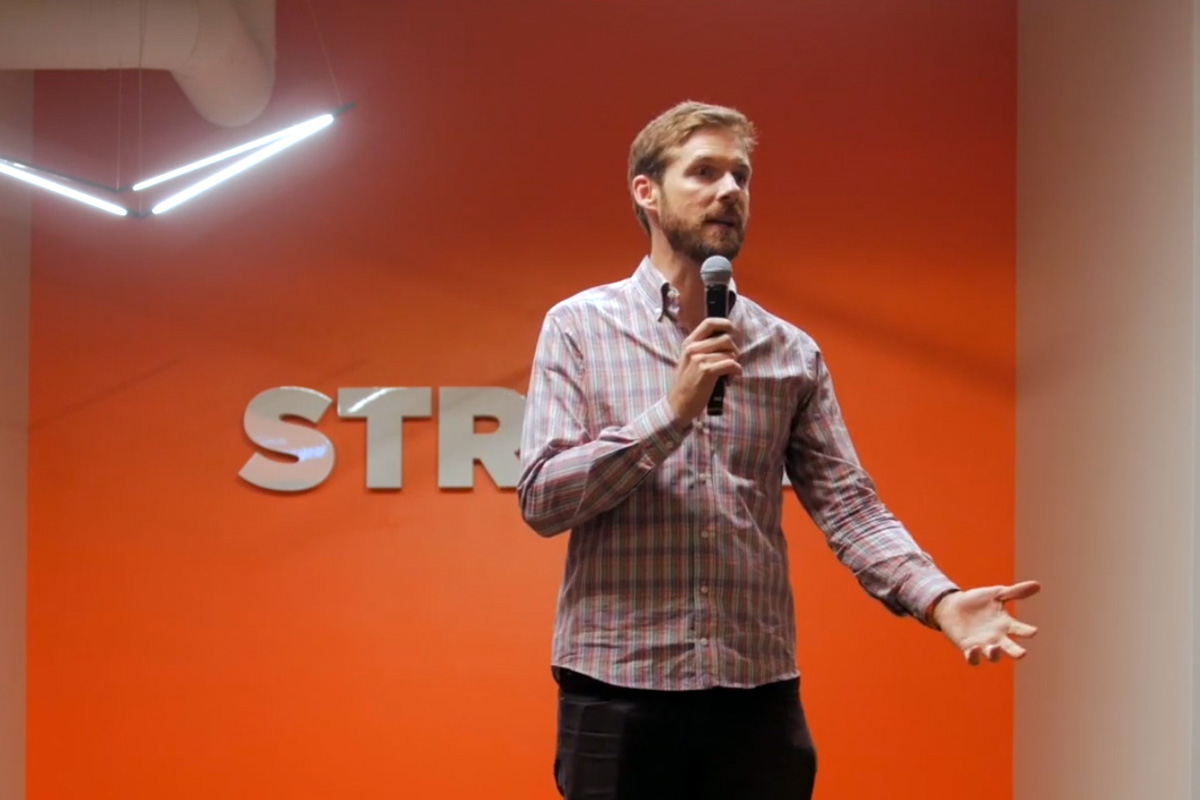
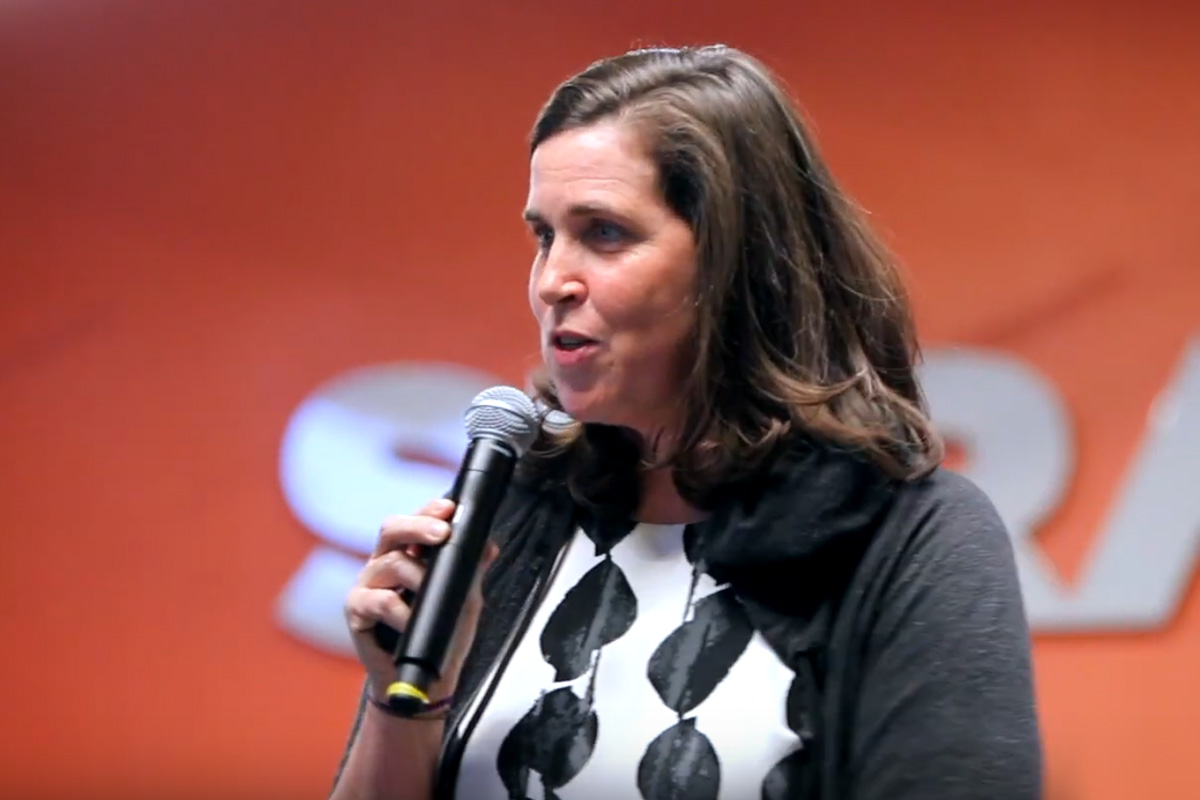

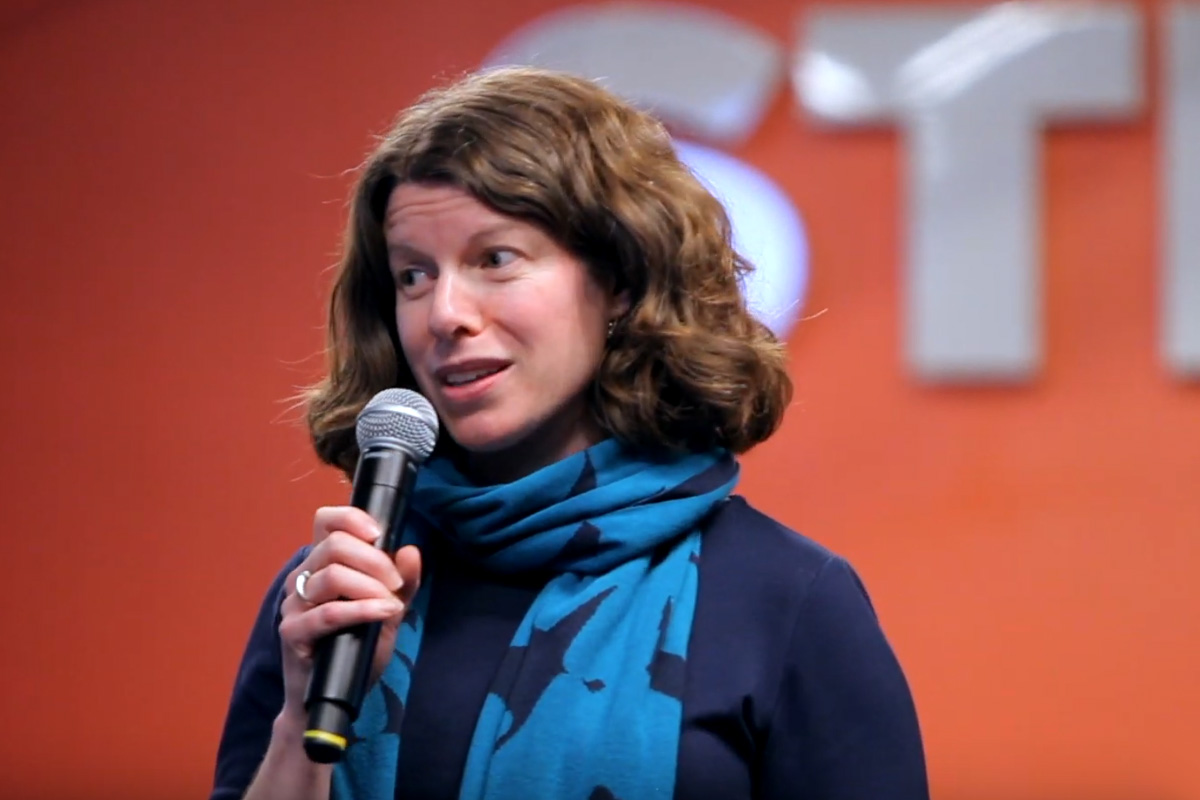
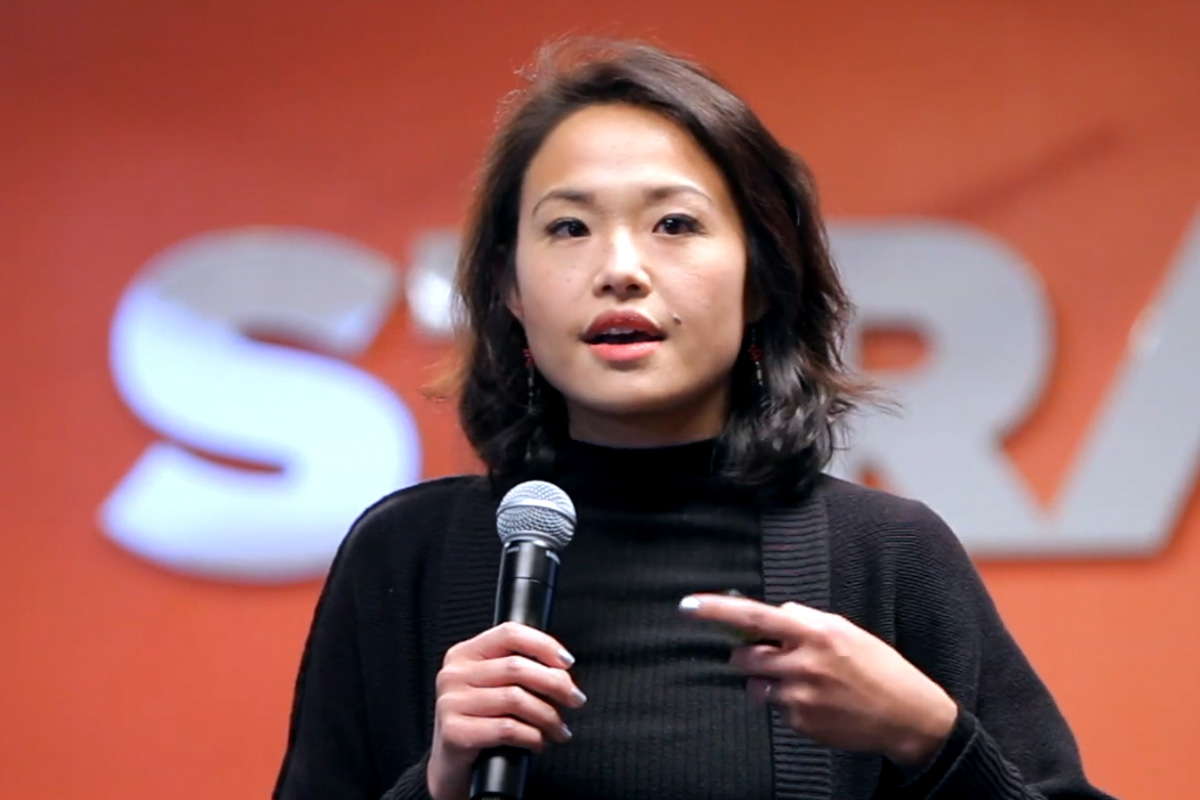
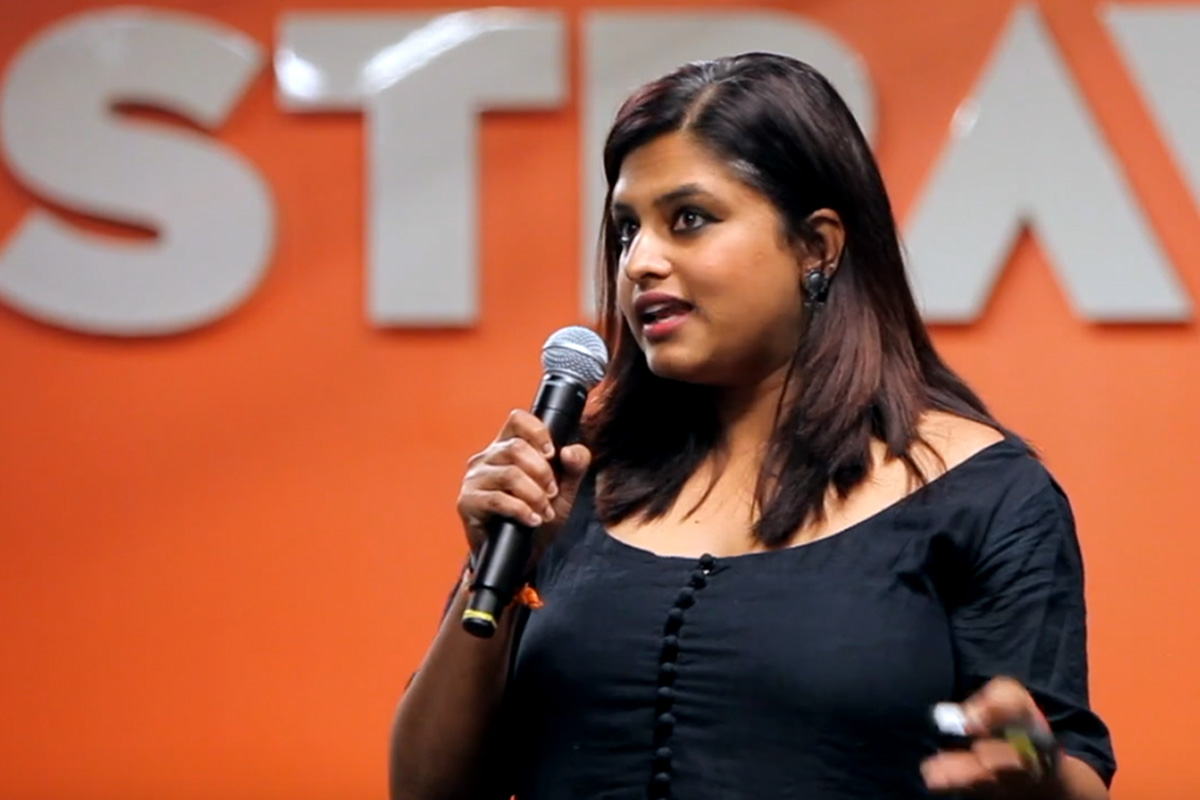
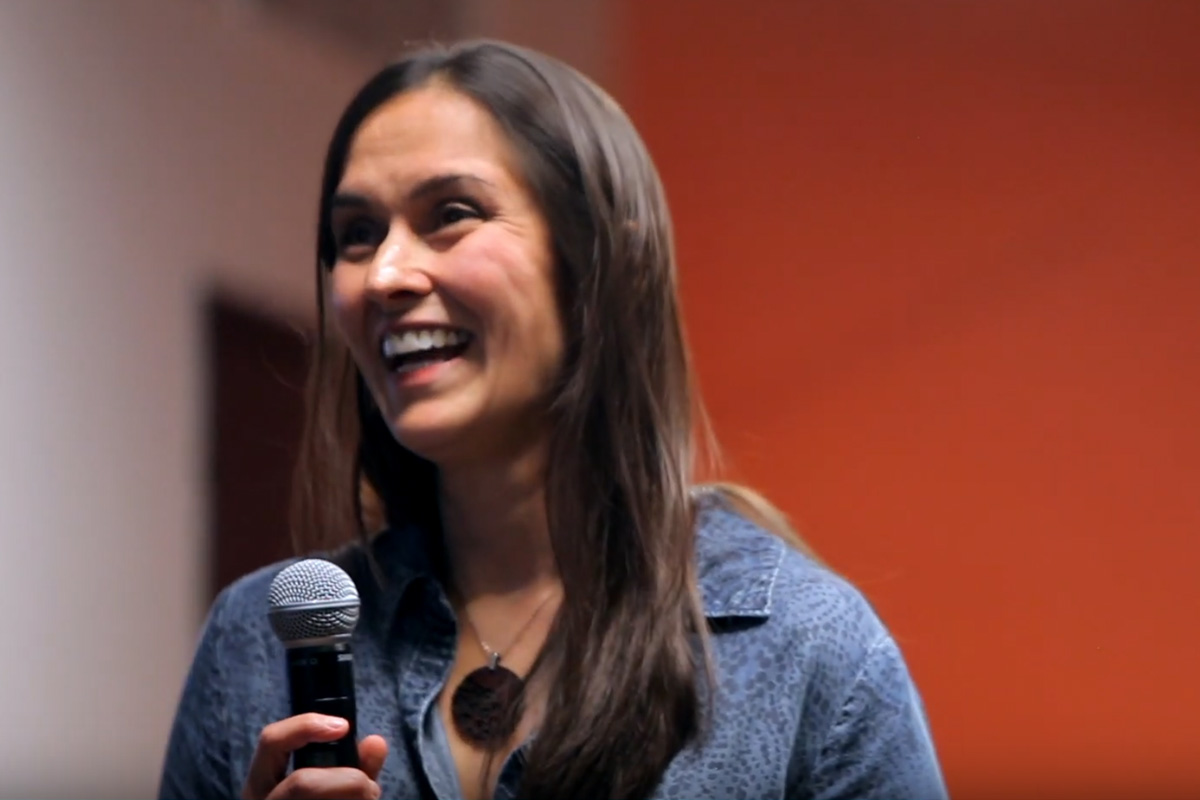
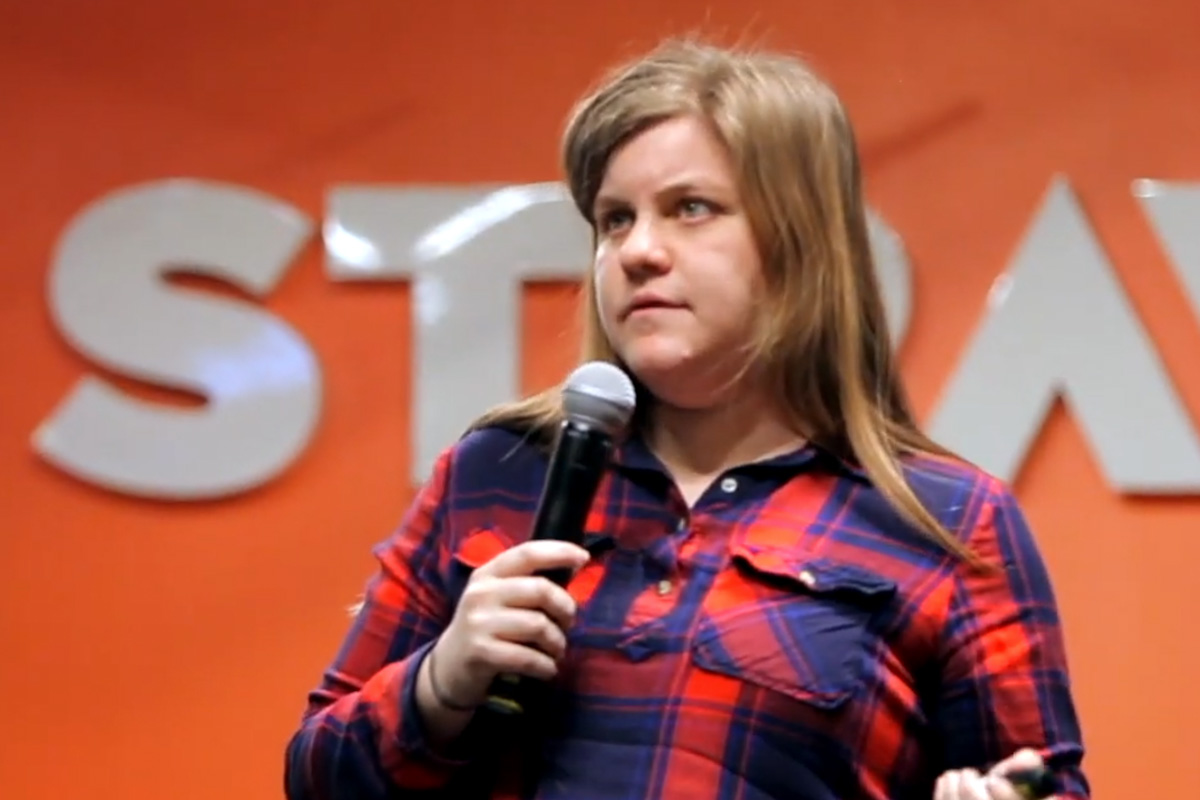
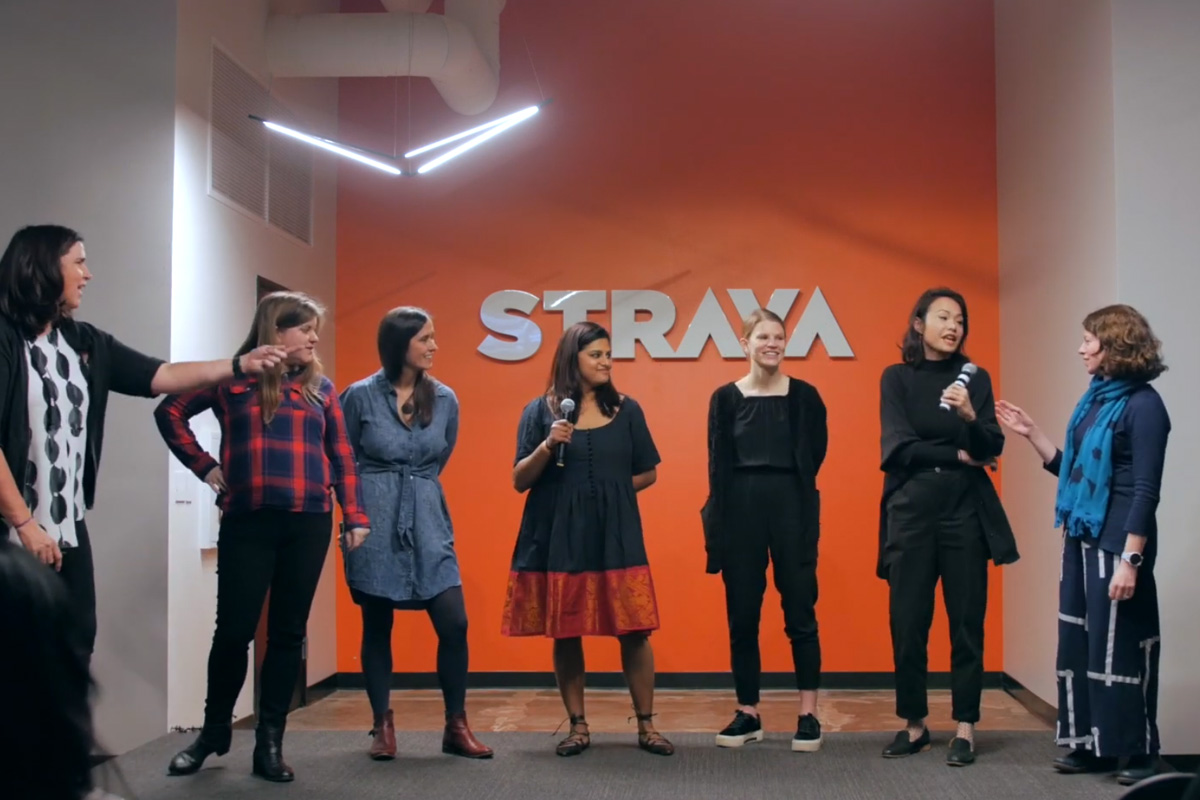
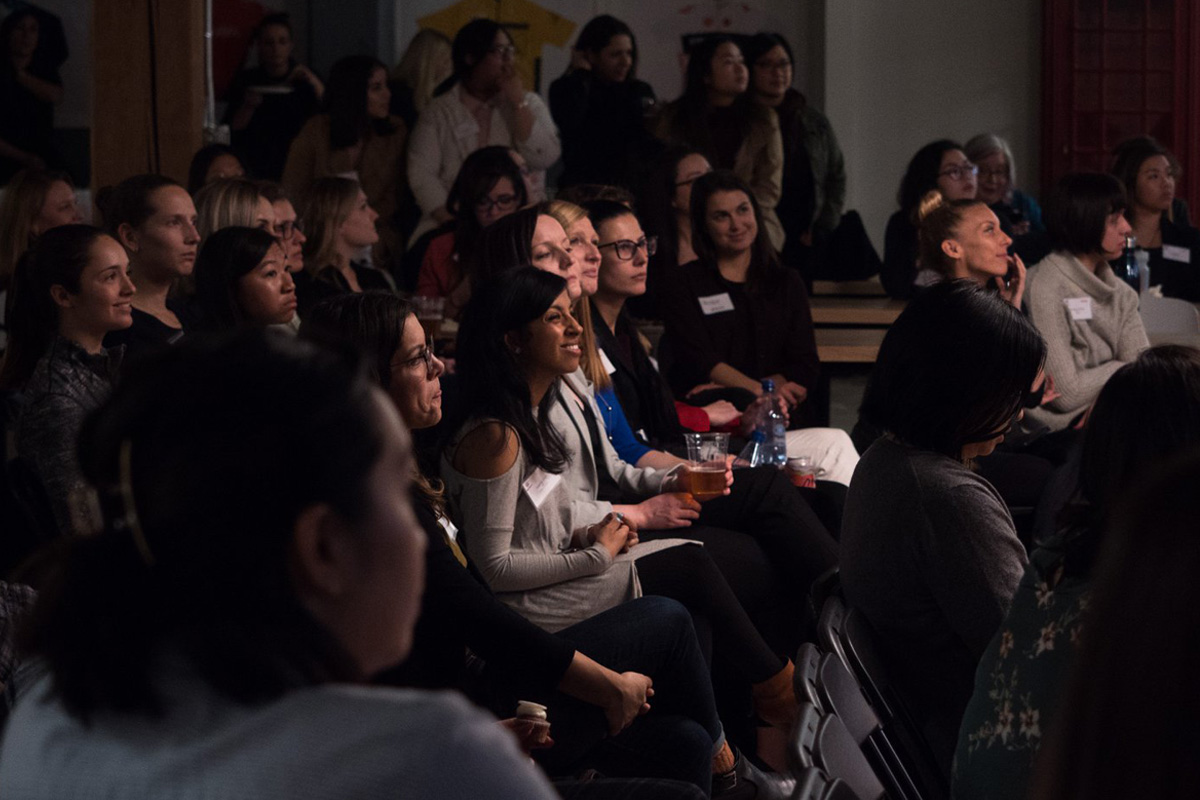
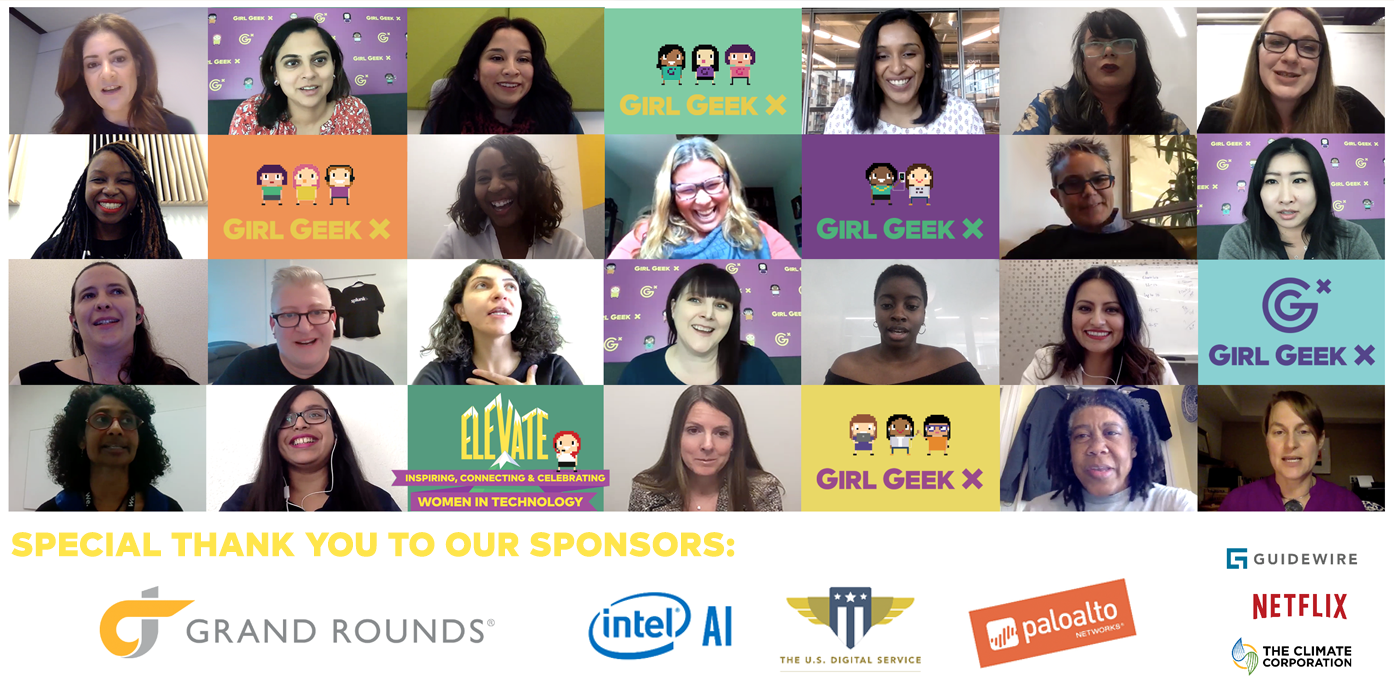

 Every time I start a new job or a new thing, right at the beginning, there’s always a setback. I took the risk, and after seeing it through, I kind of failed up… and that’s okay. It’s okay to fail forward. I was challenged, and I couldn’t be happier that I did it. But every day, it felt like the worst struggle ever.”
Every time I start a new job or a new thing, right at the beginning, there’s always a setback. I took the risk, and after seeing it through, I kind of failed up… and that’s okay. It’s okay to fail forward. I was challenged, and I couldn’t be happier that I did it. But every day, it felt like the worst struggle ever.”
